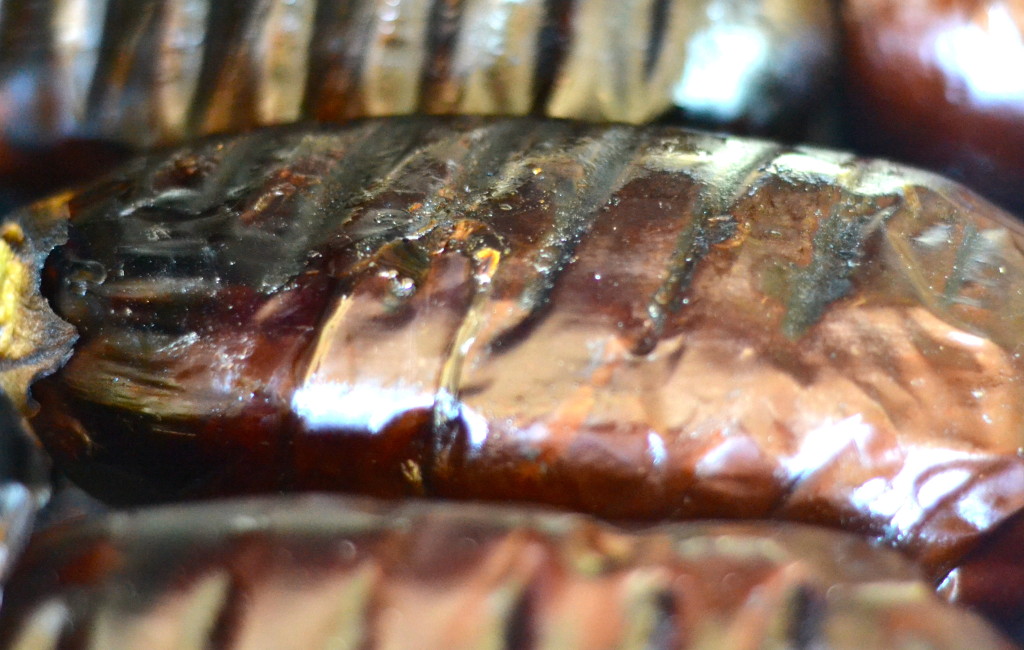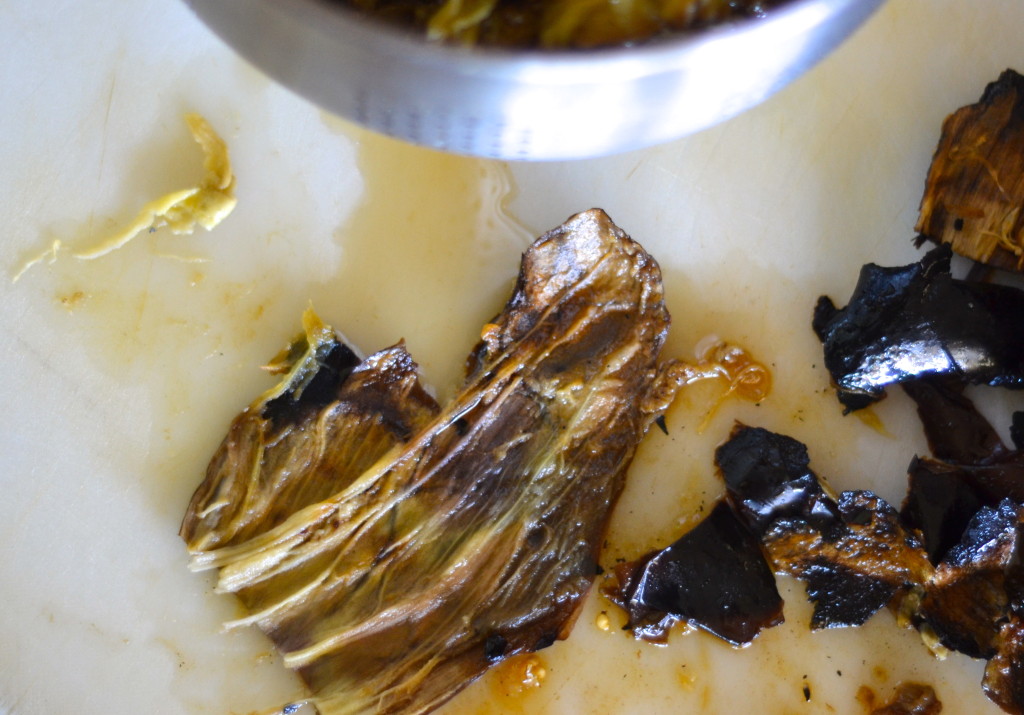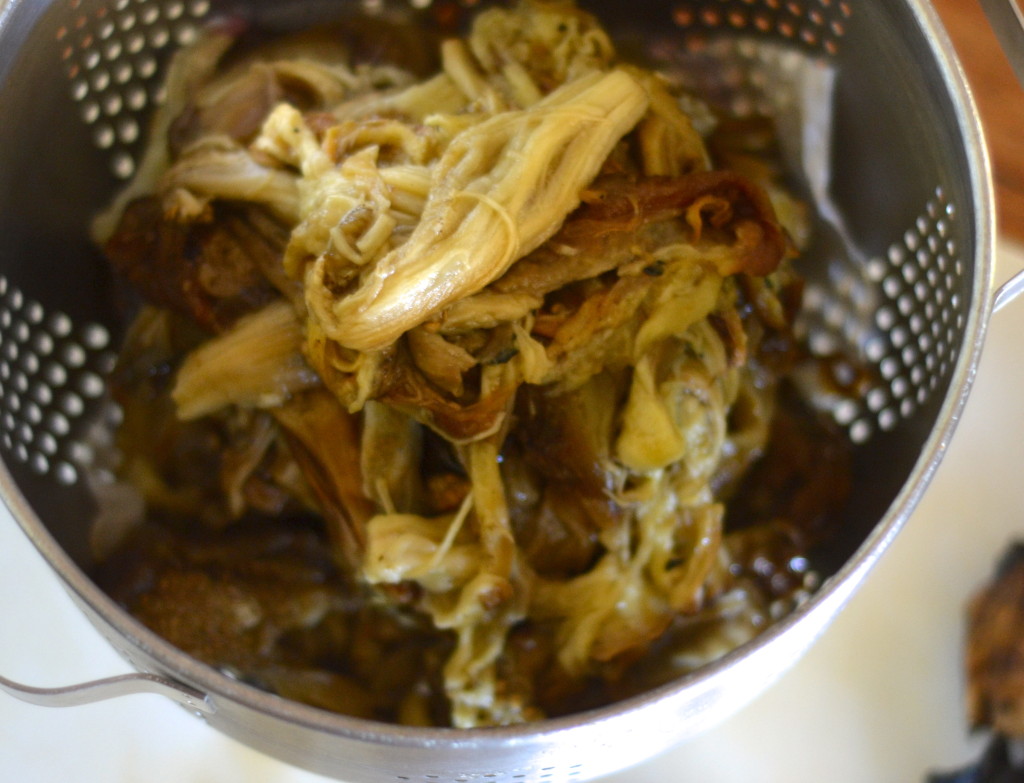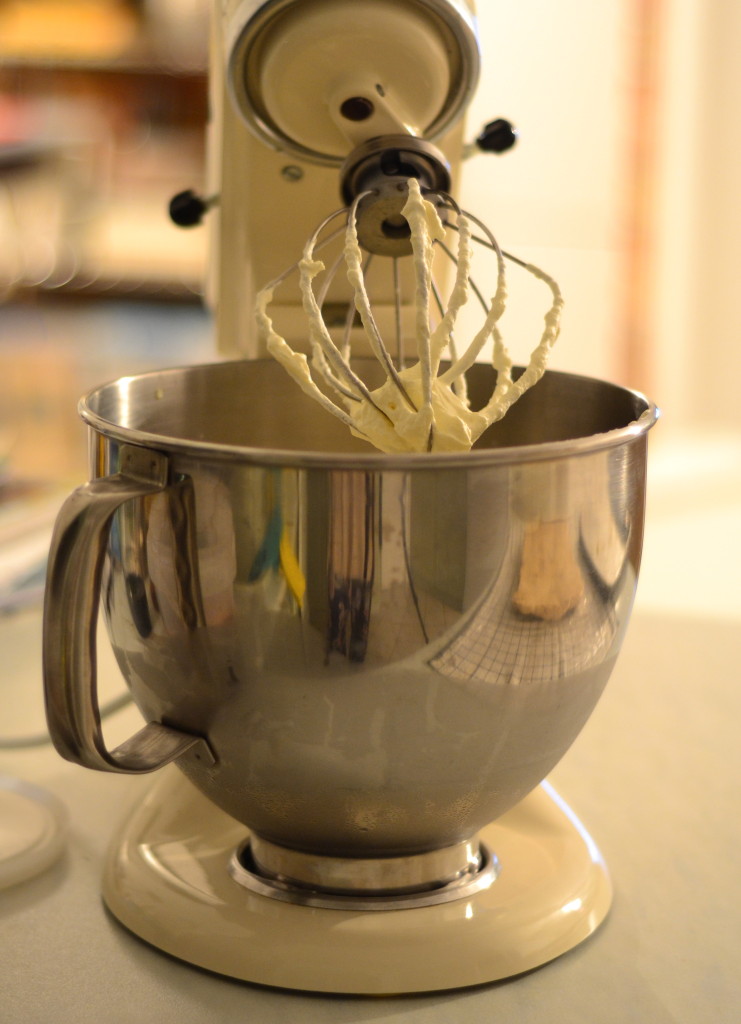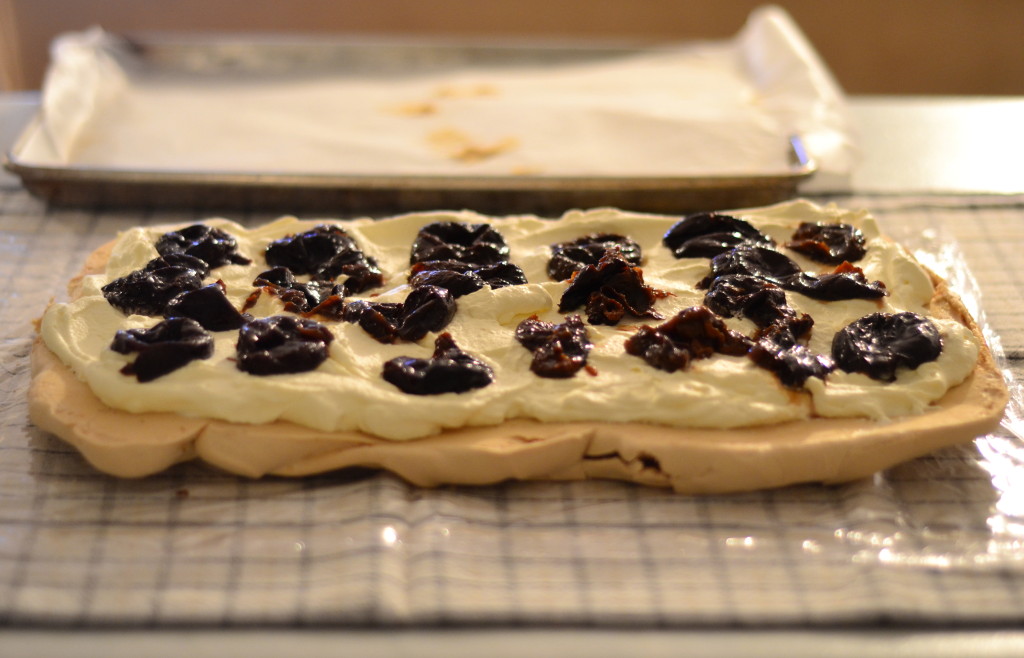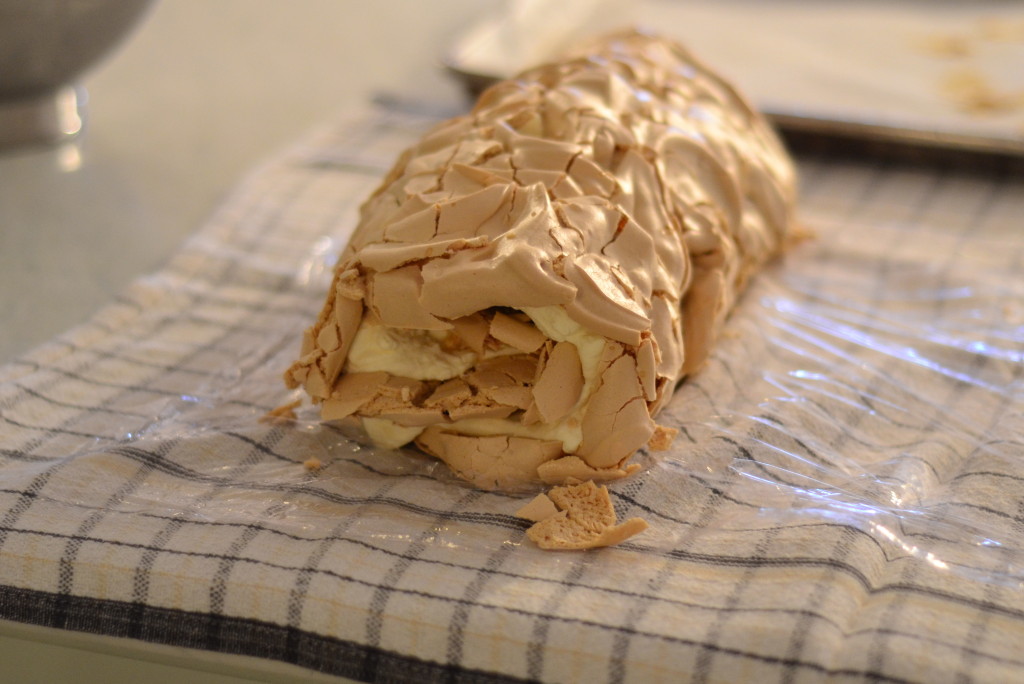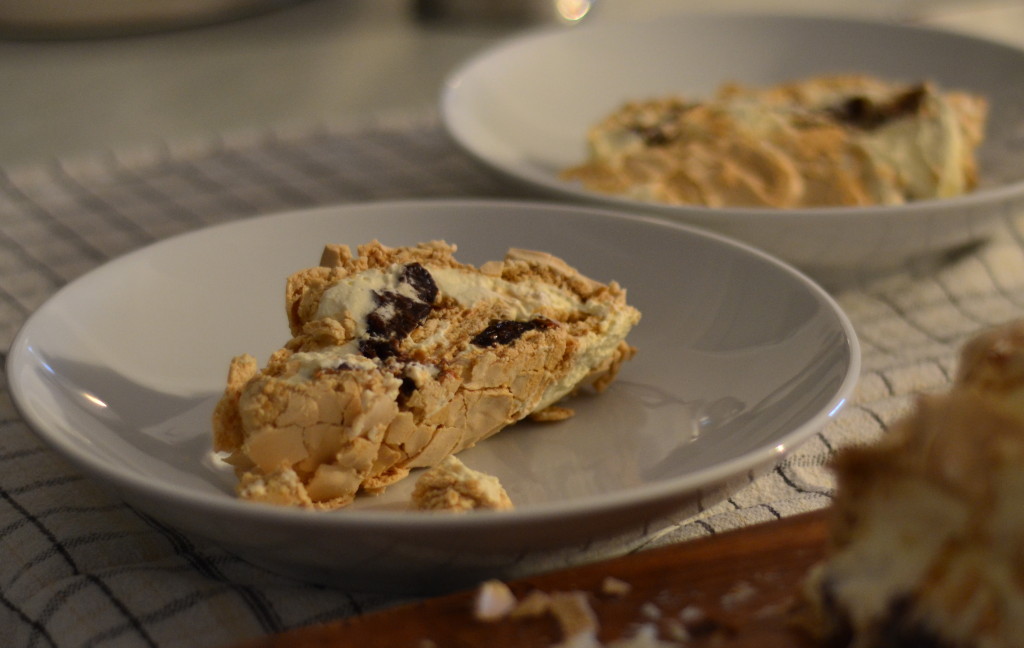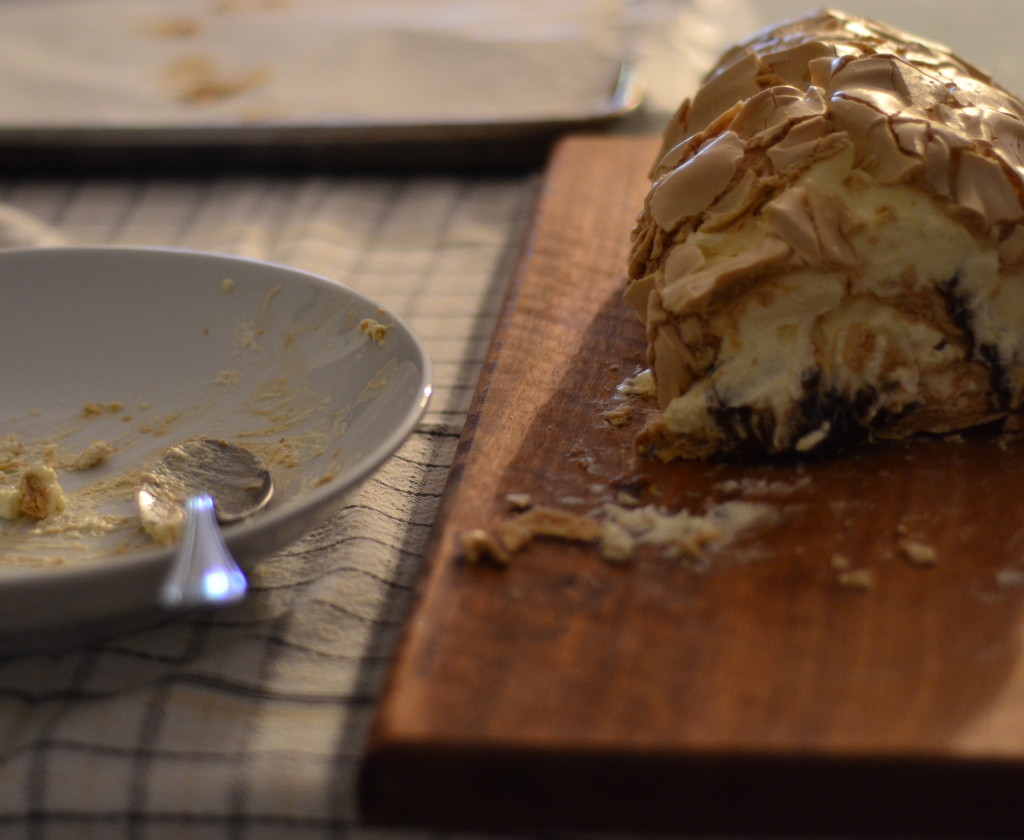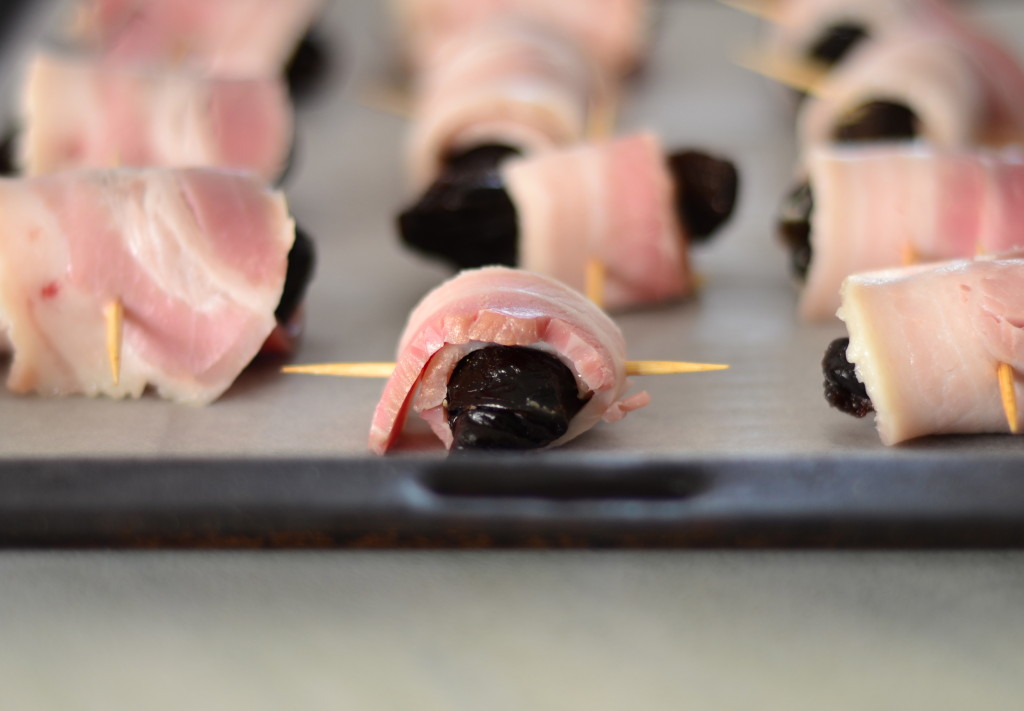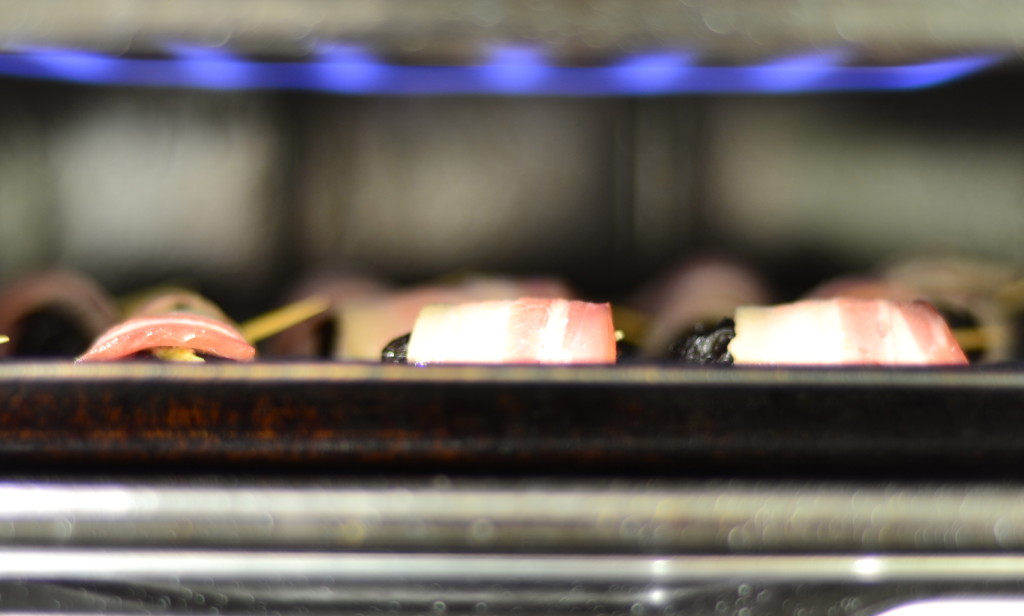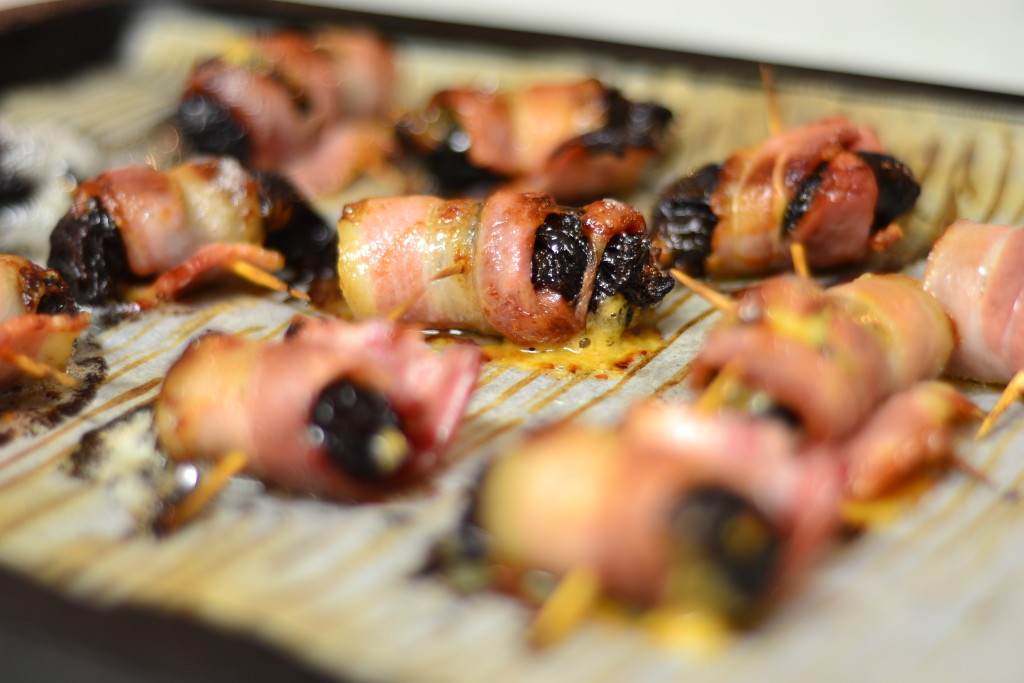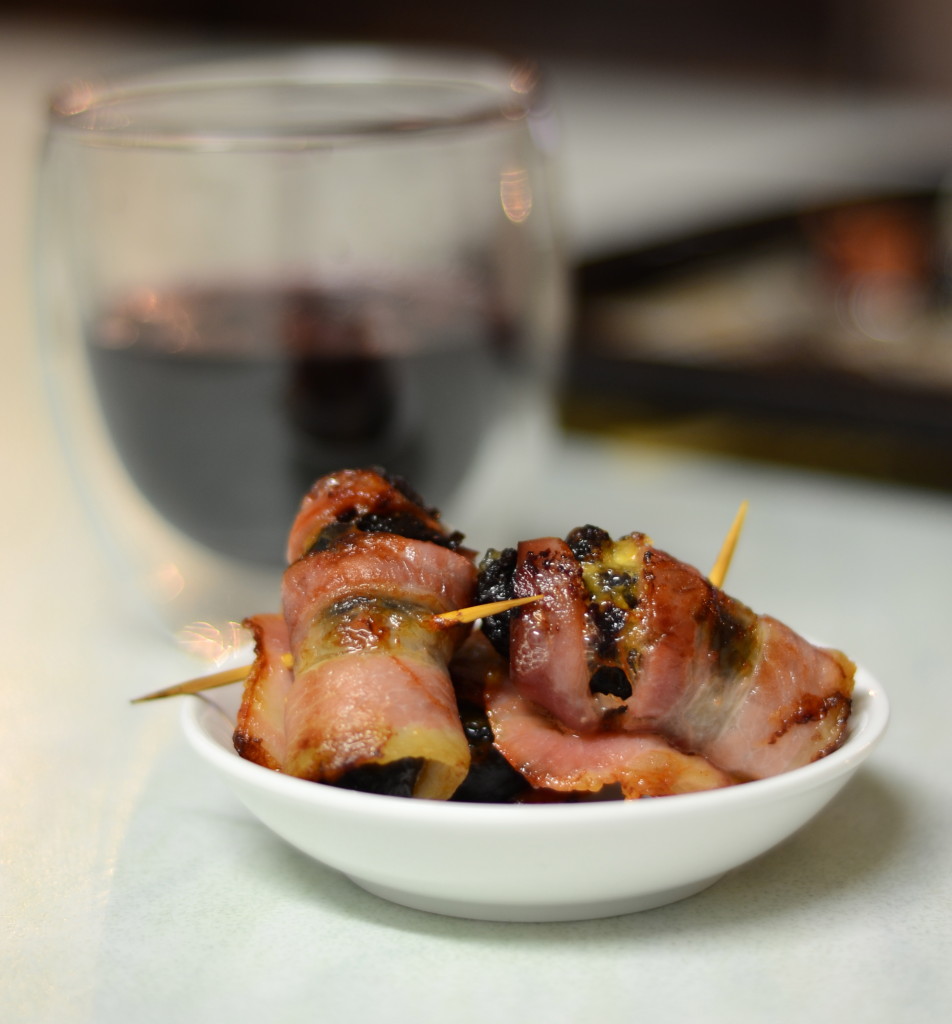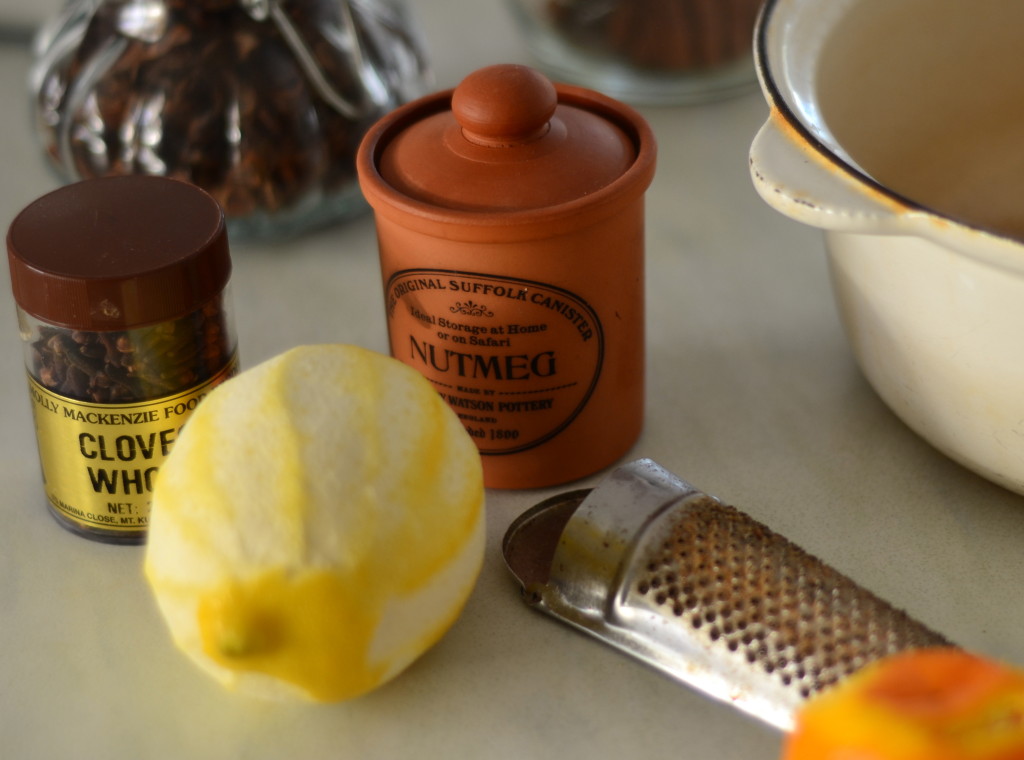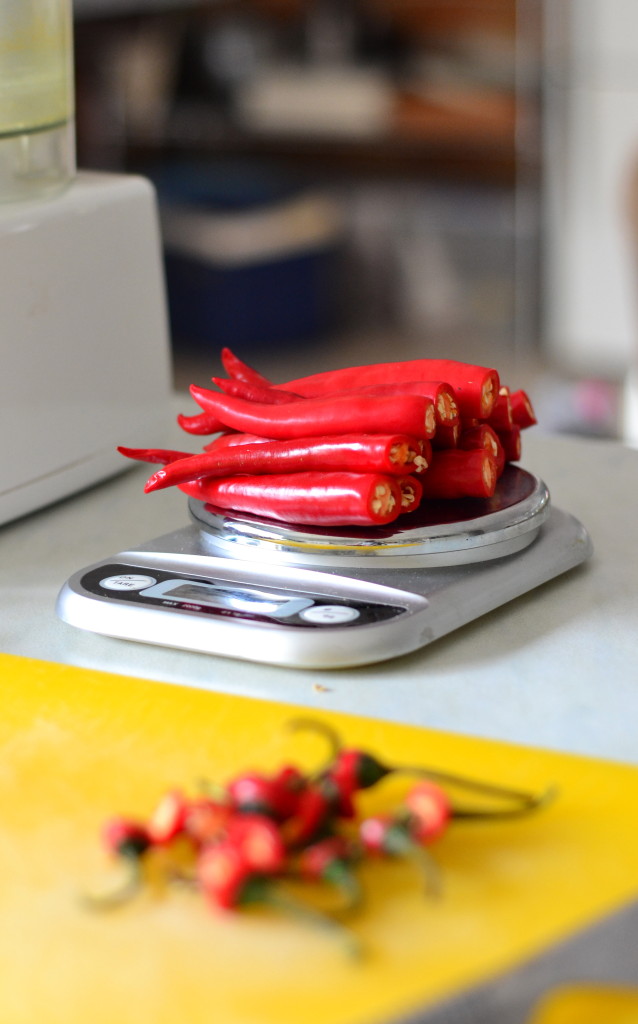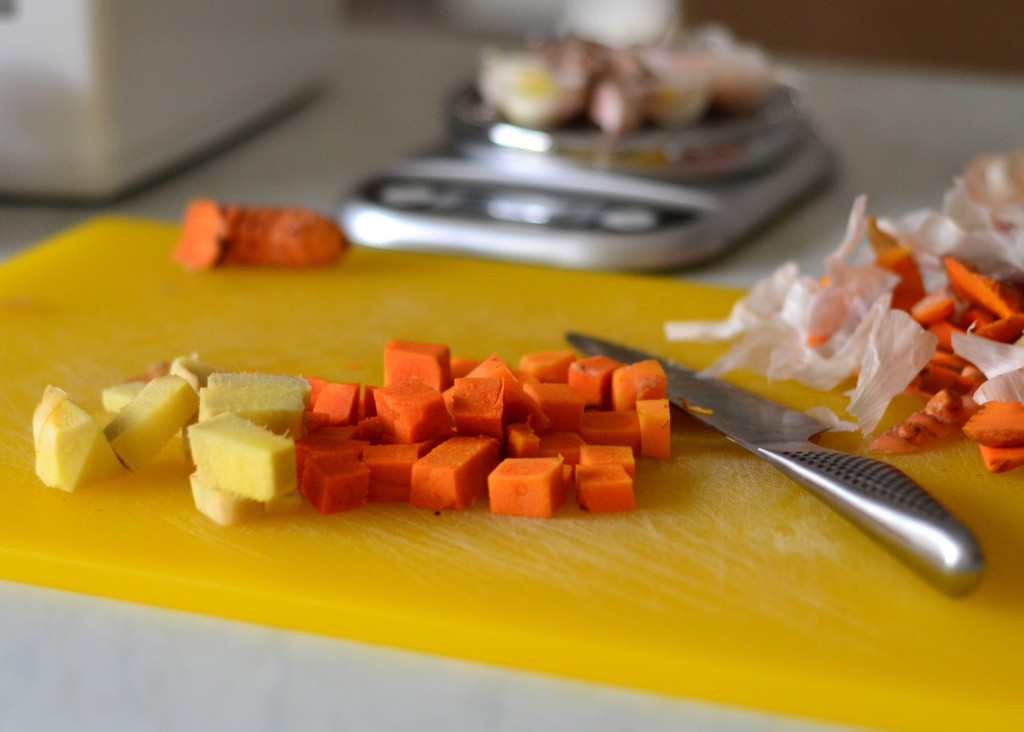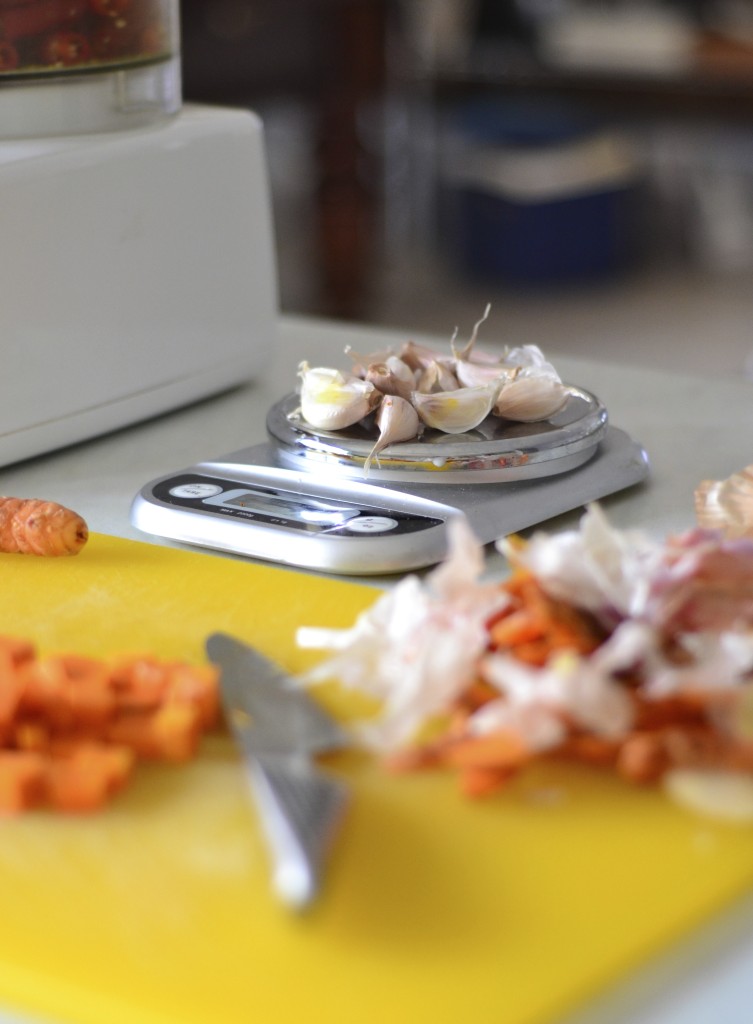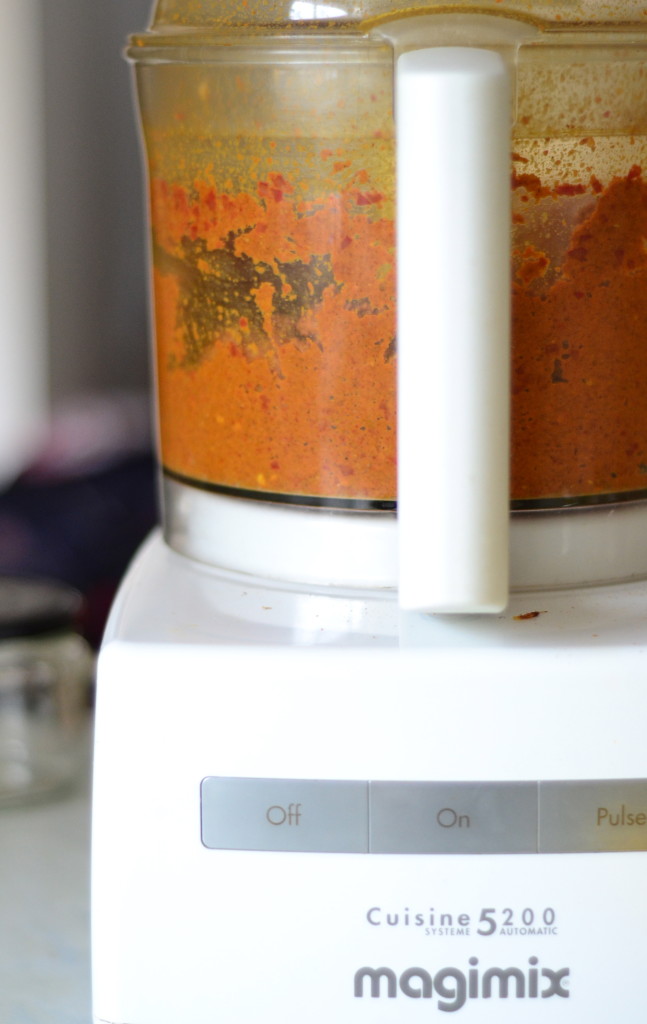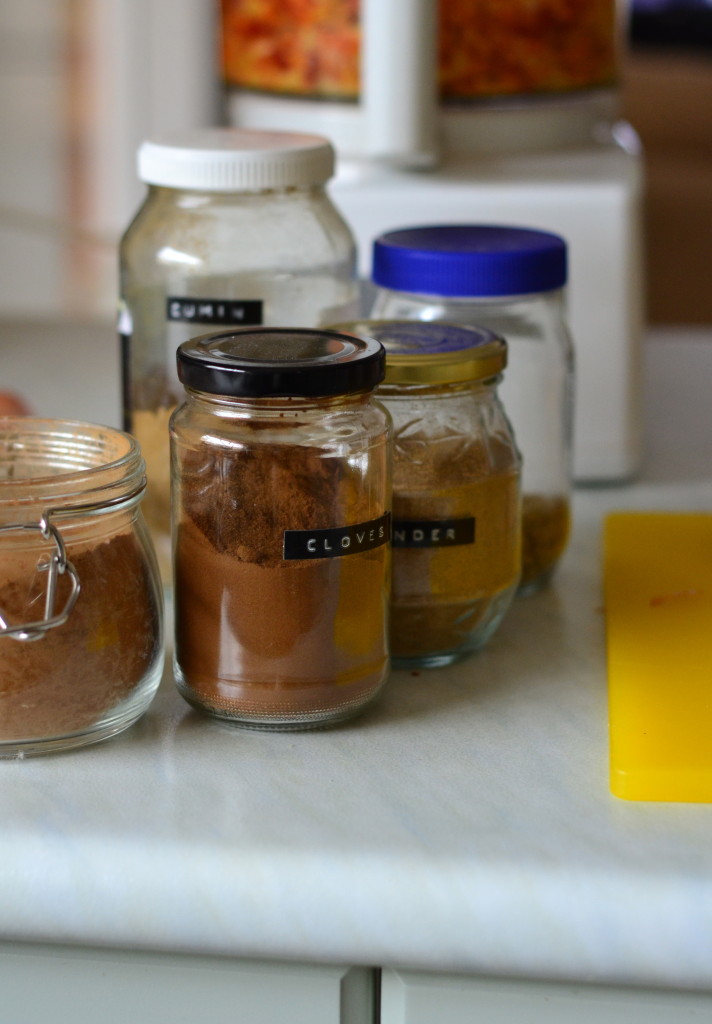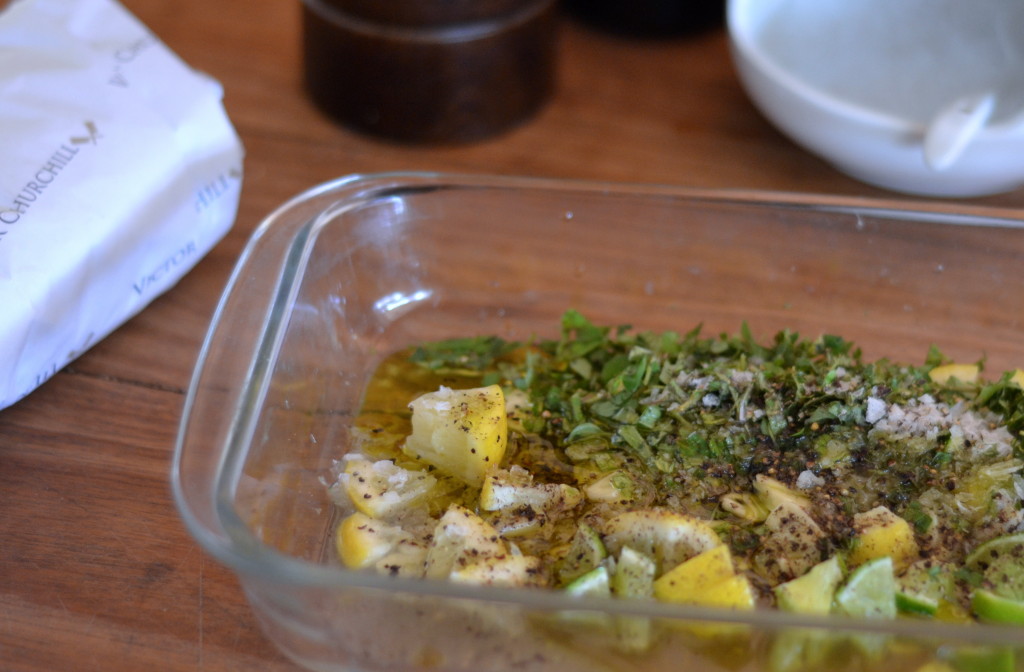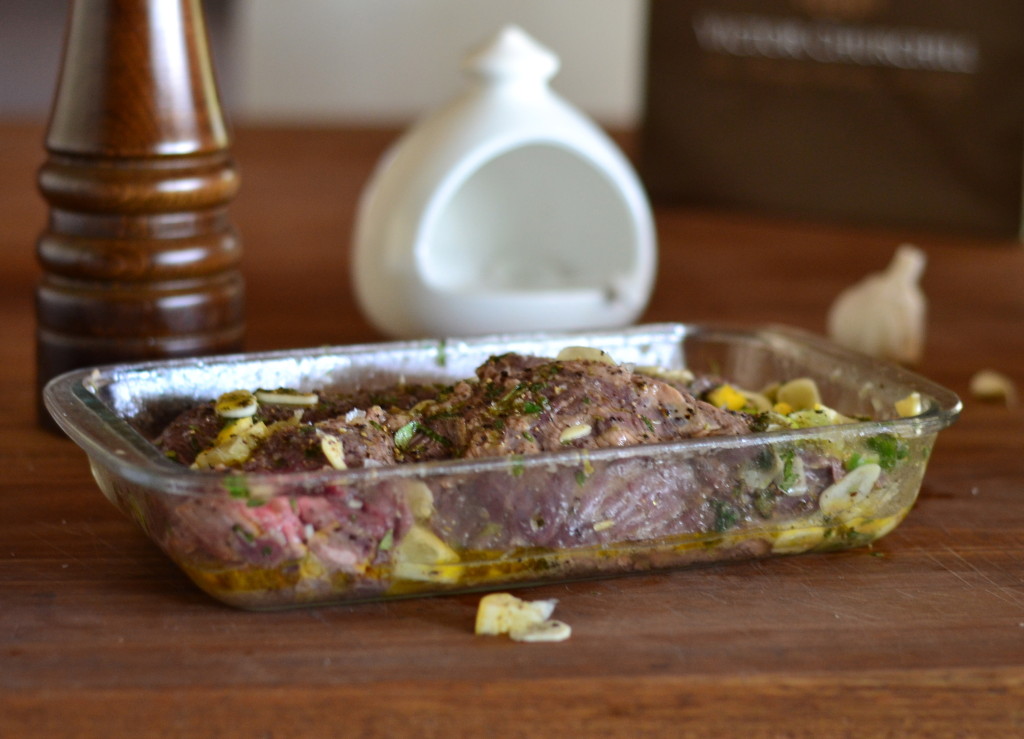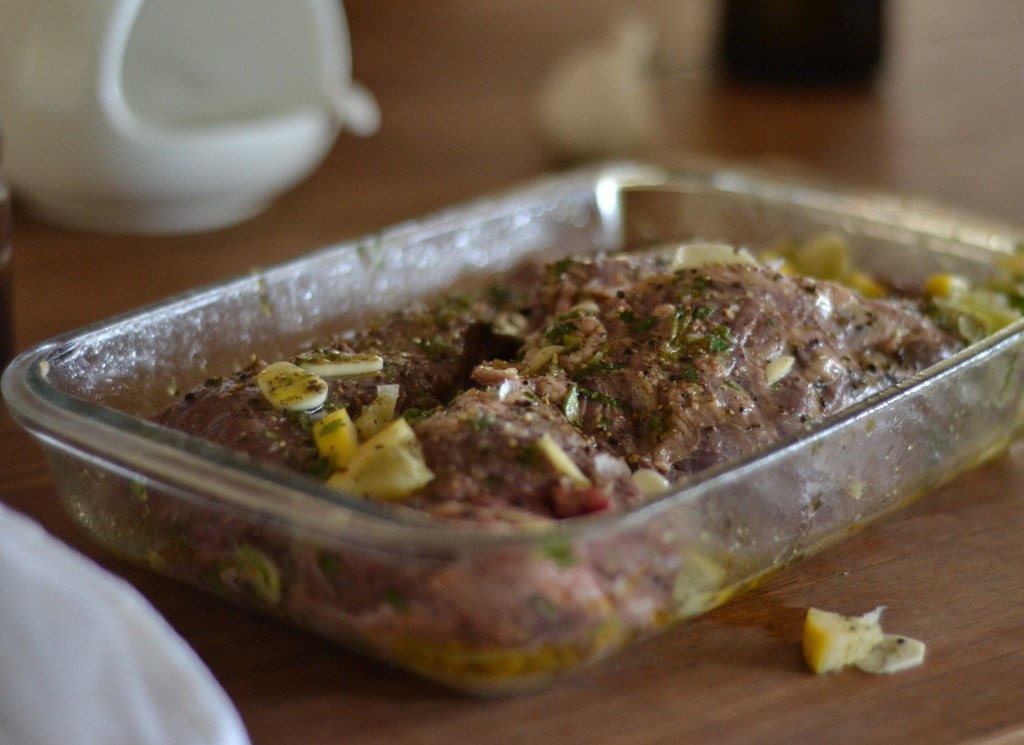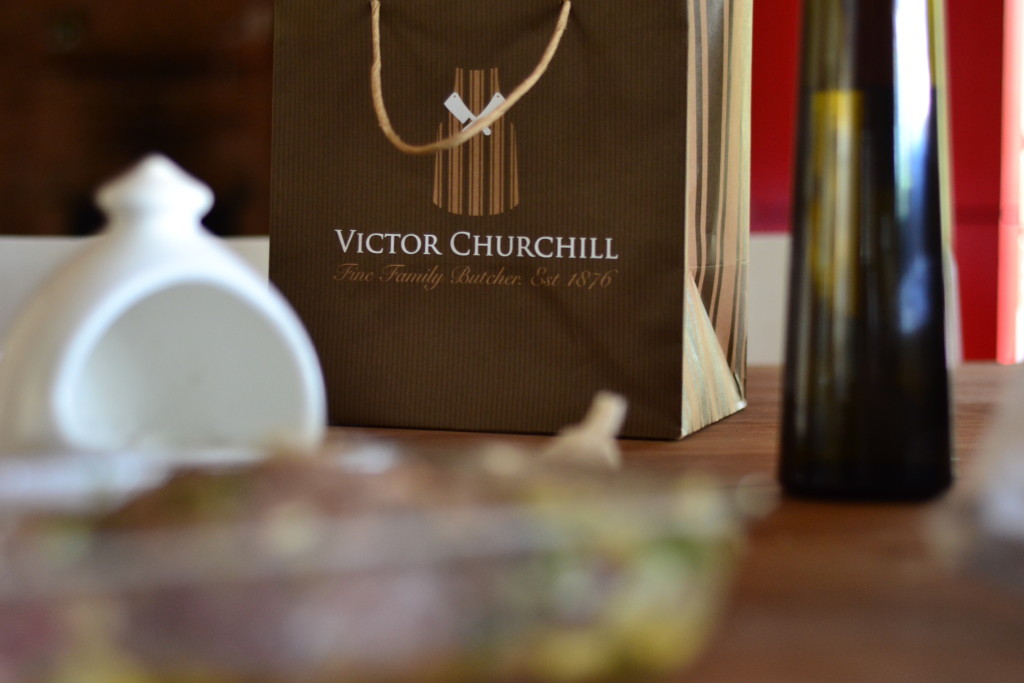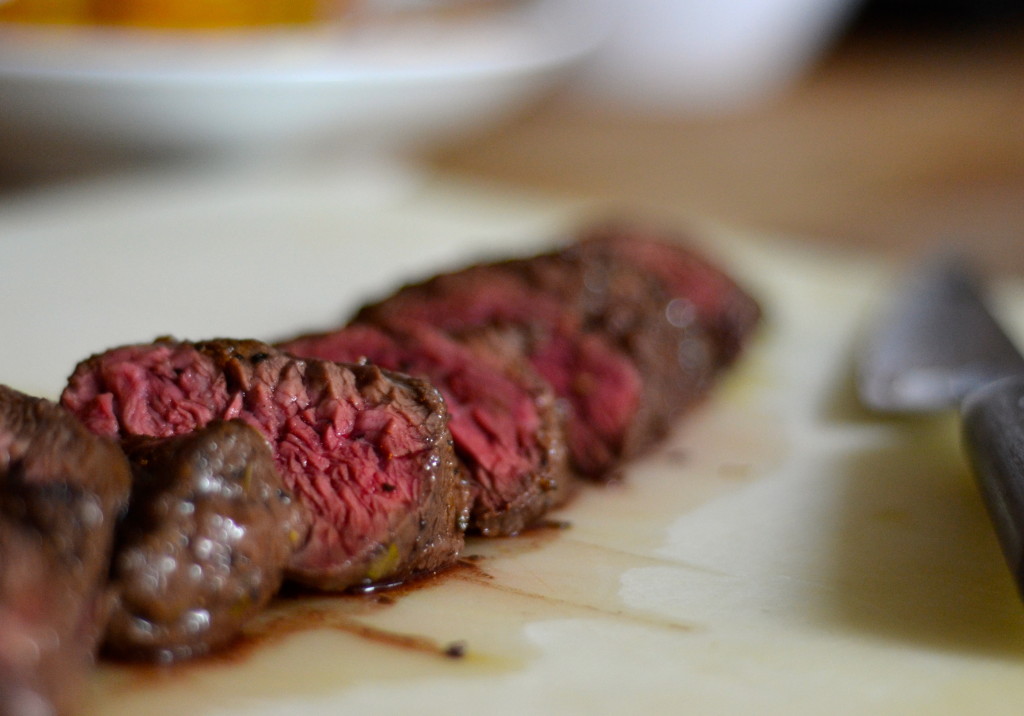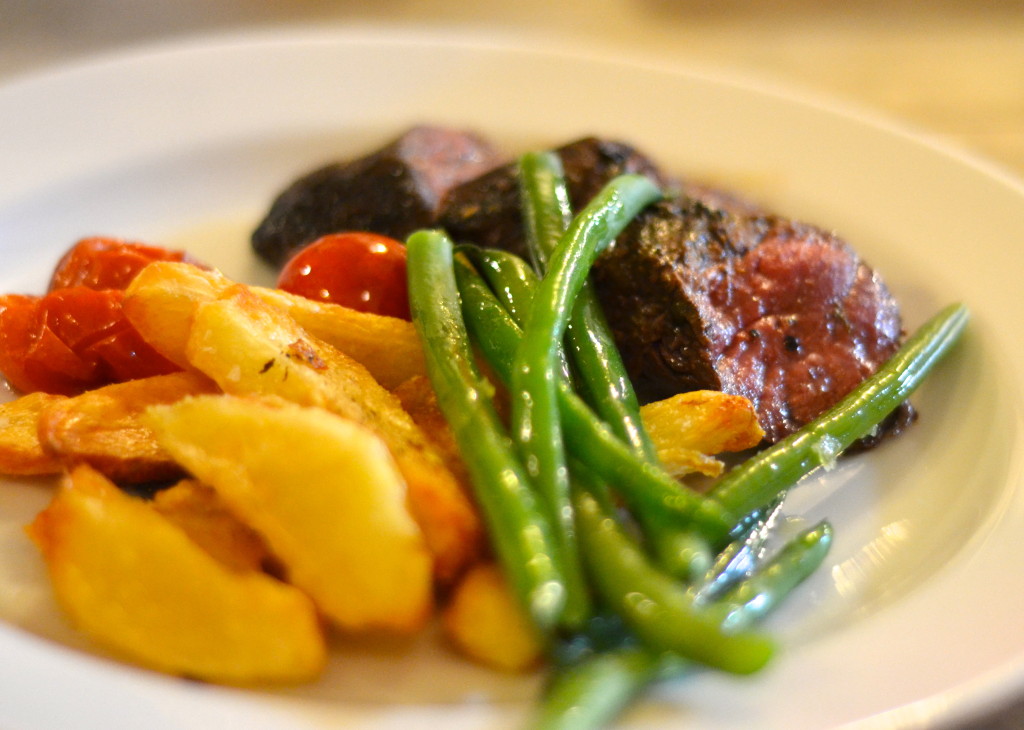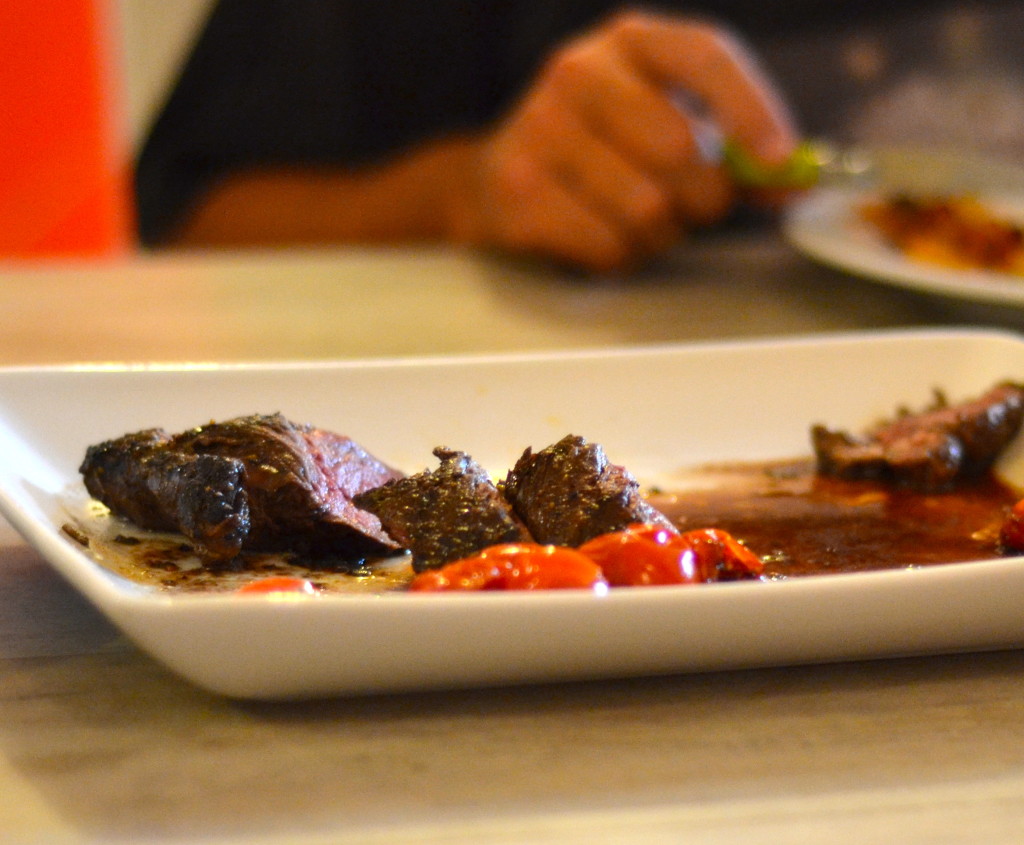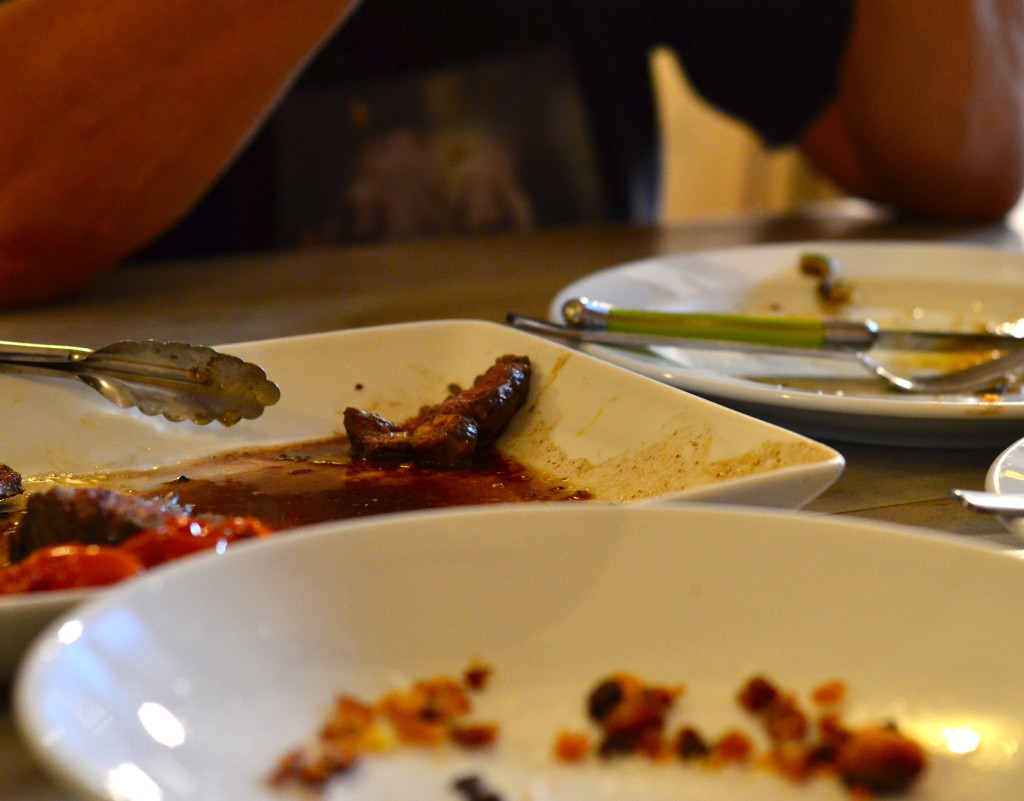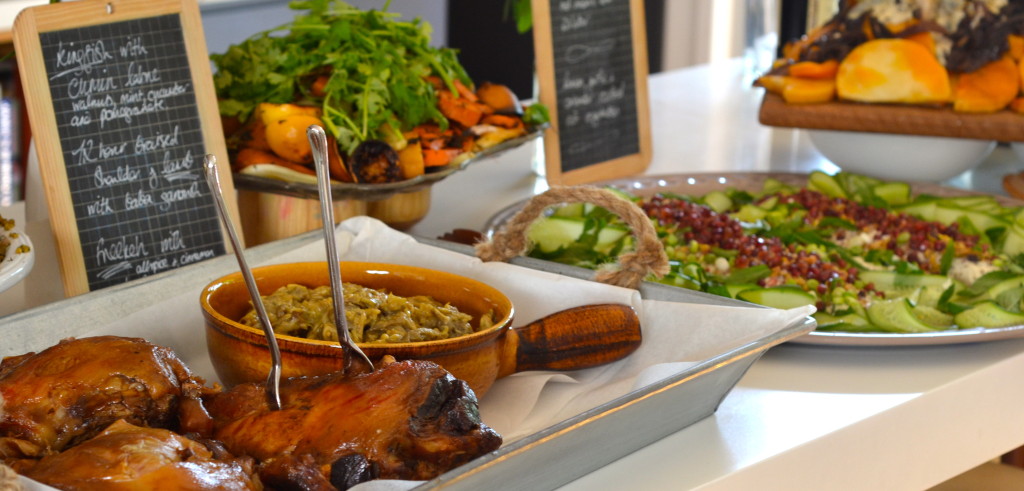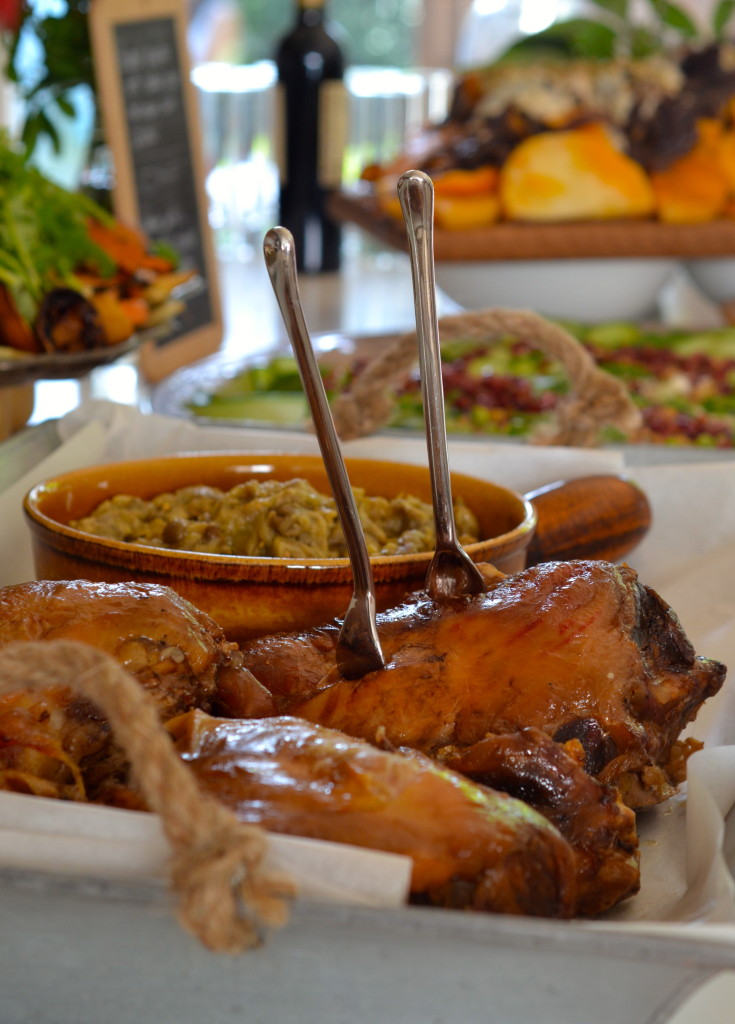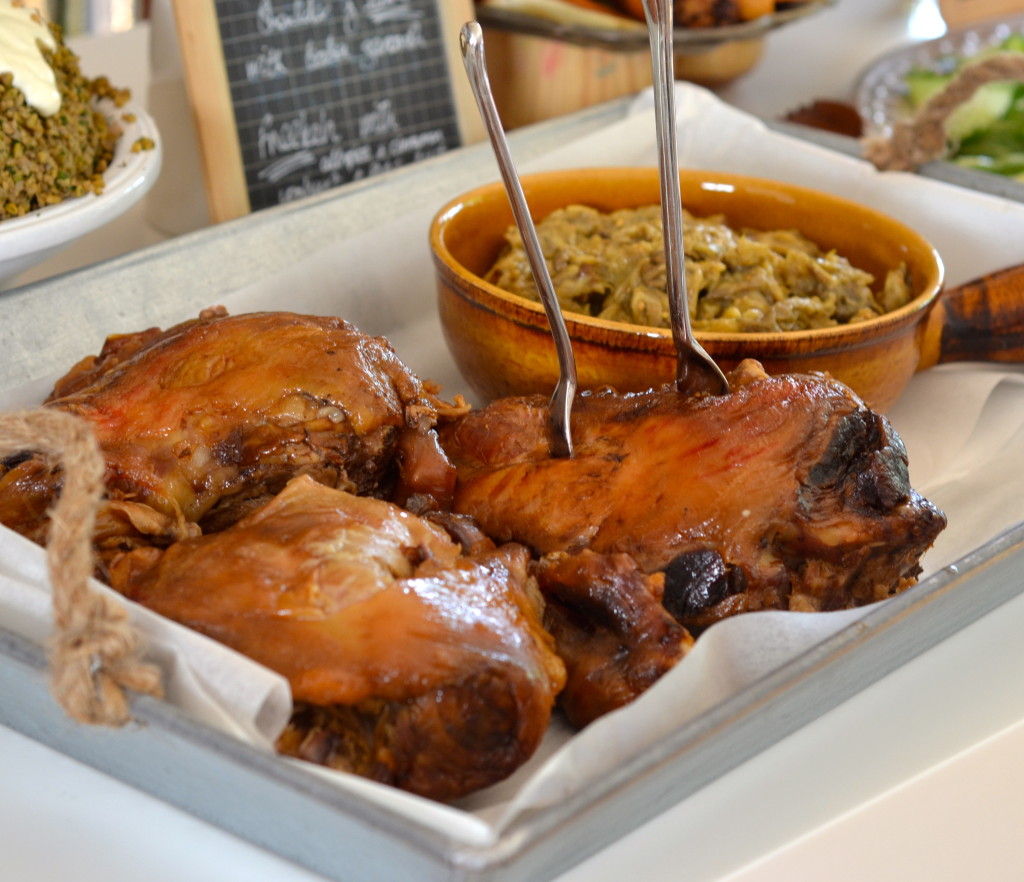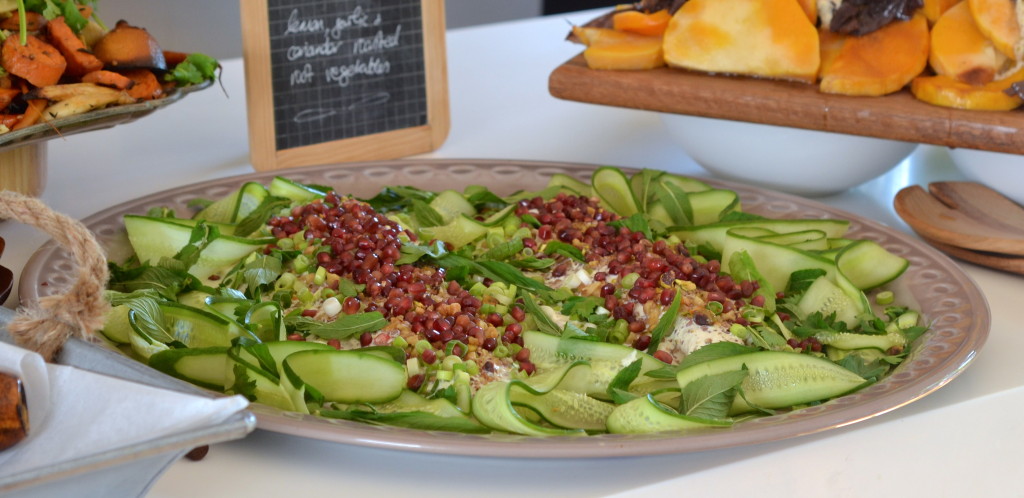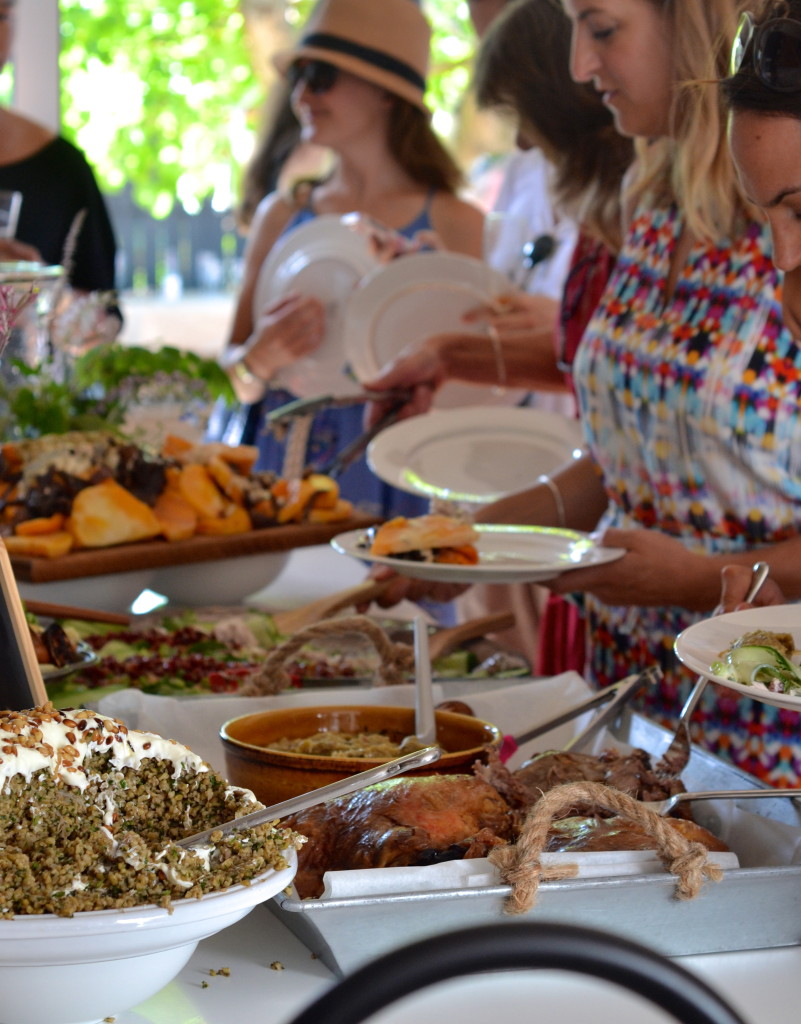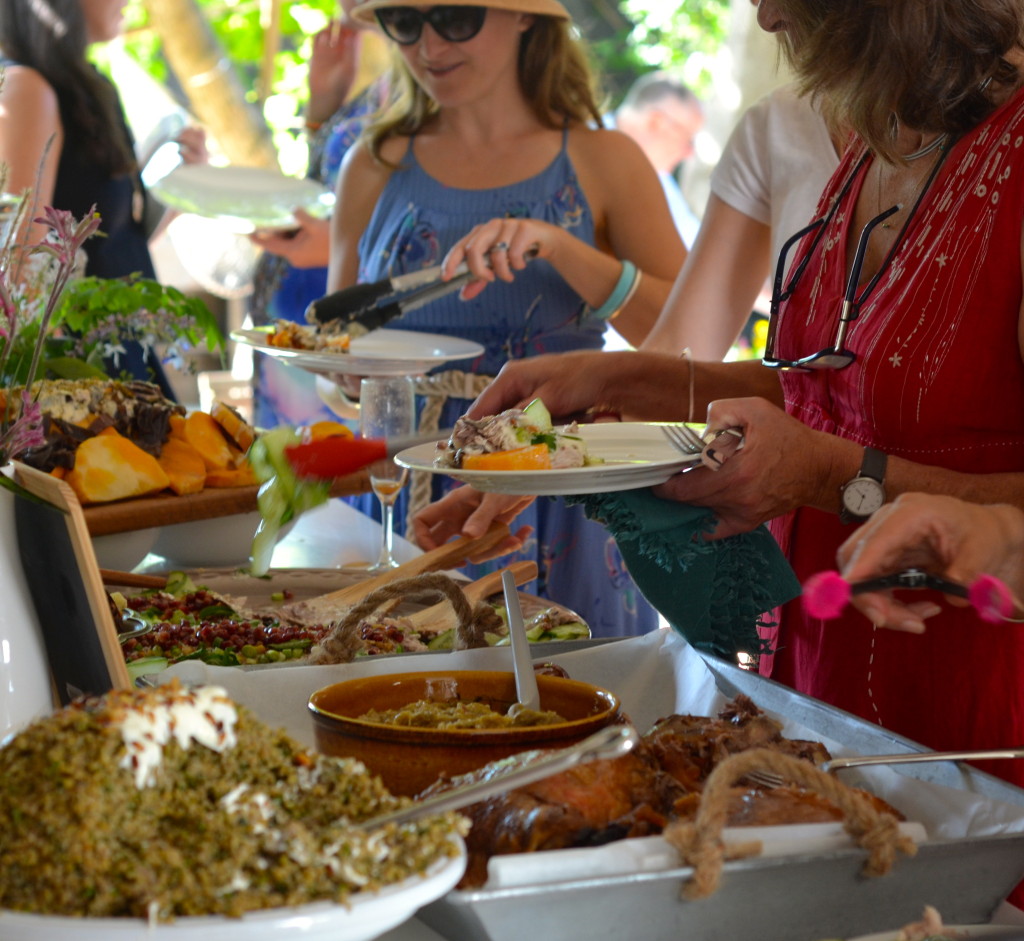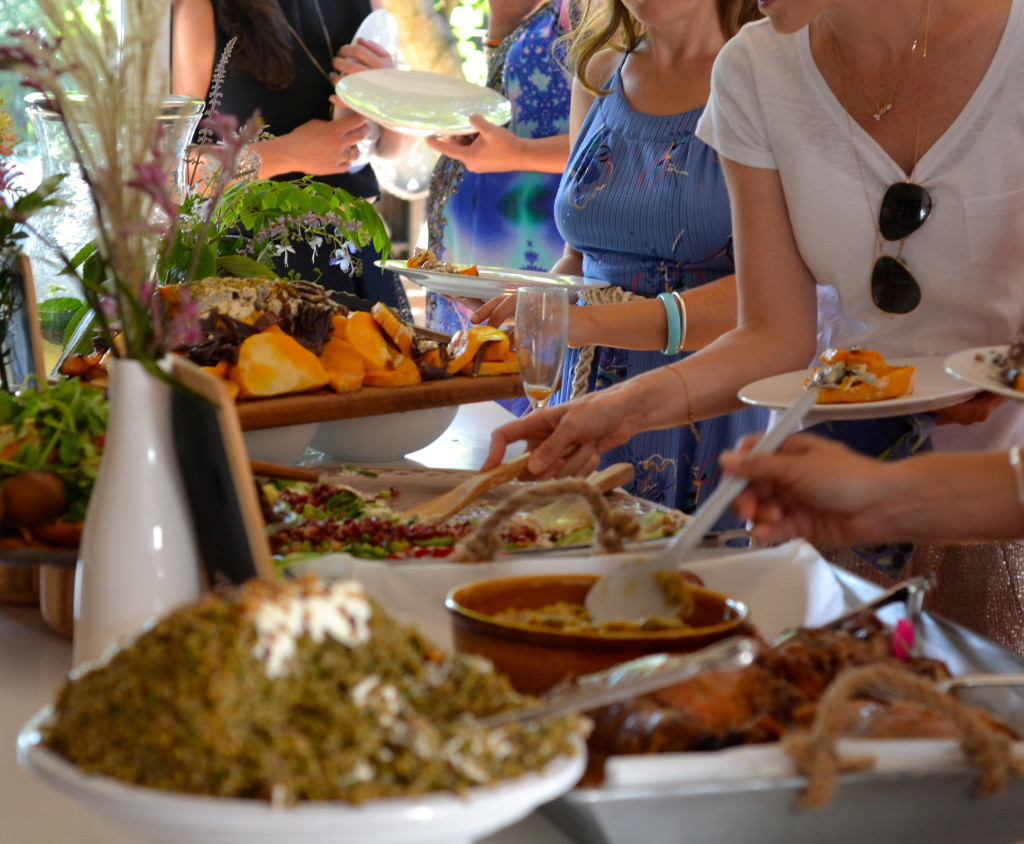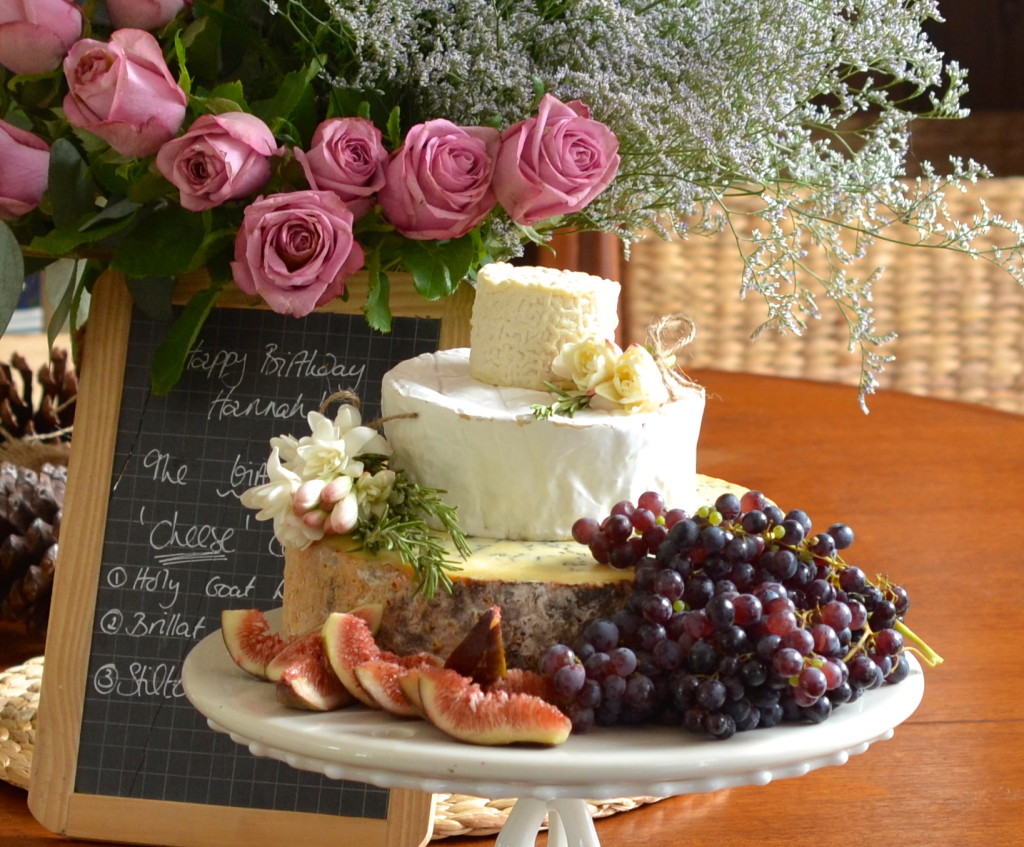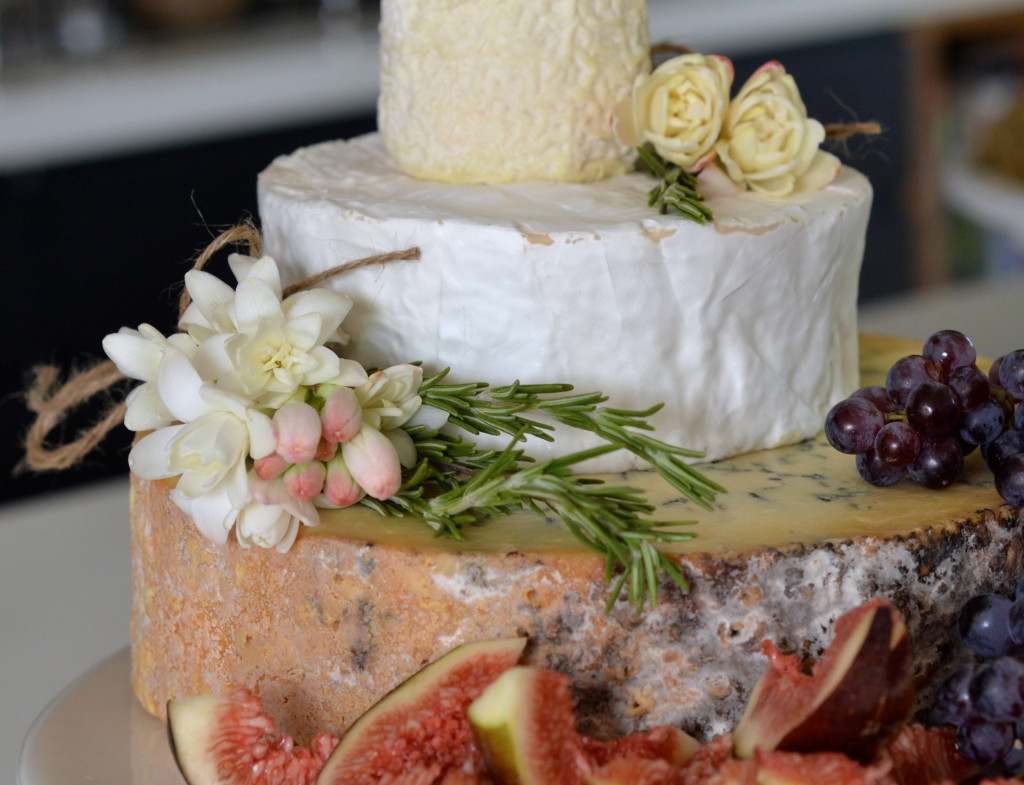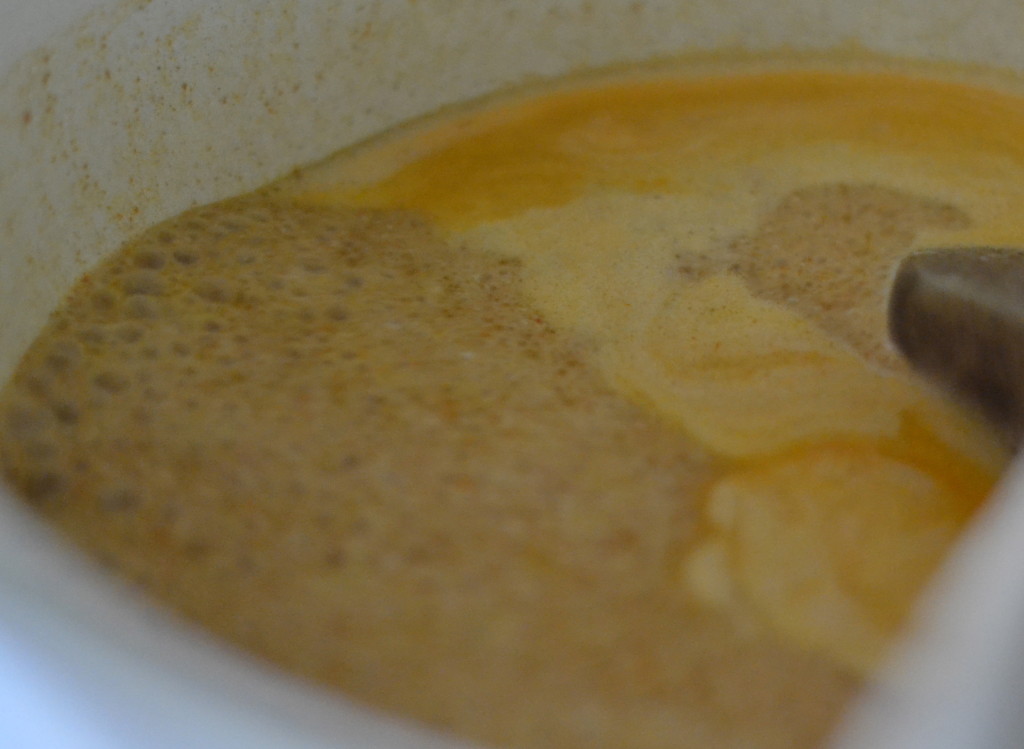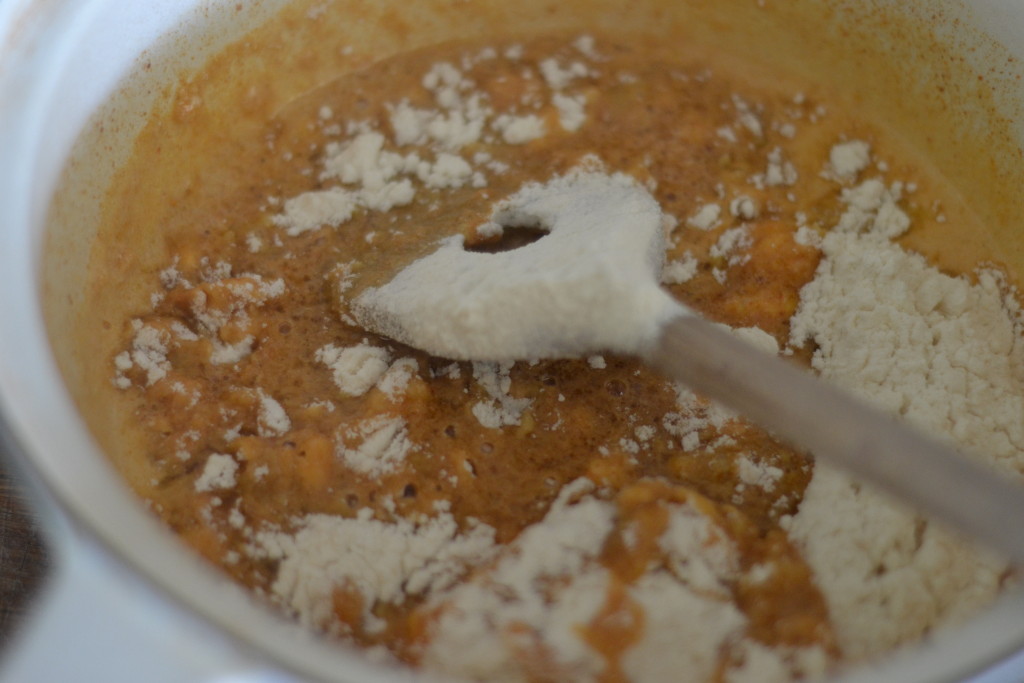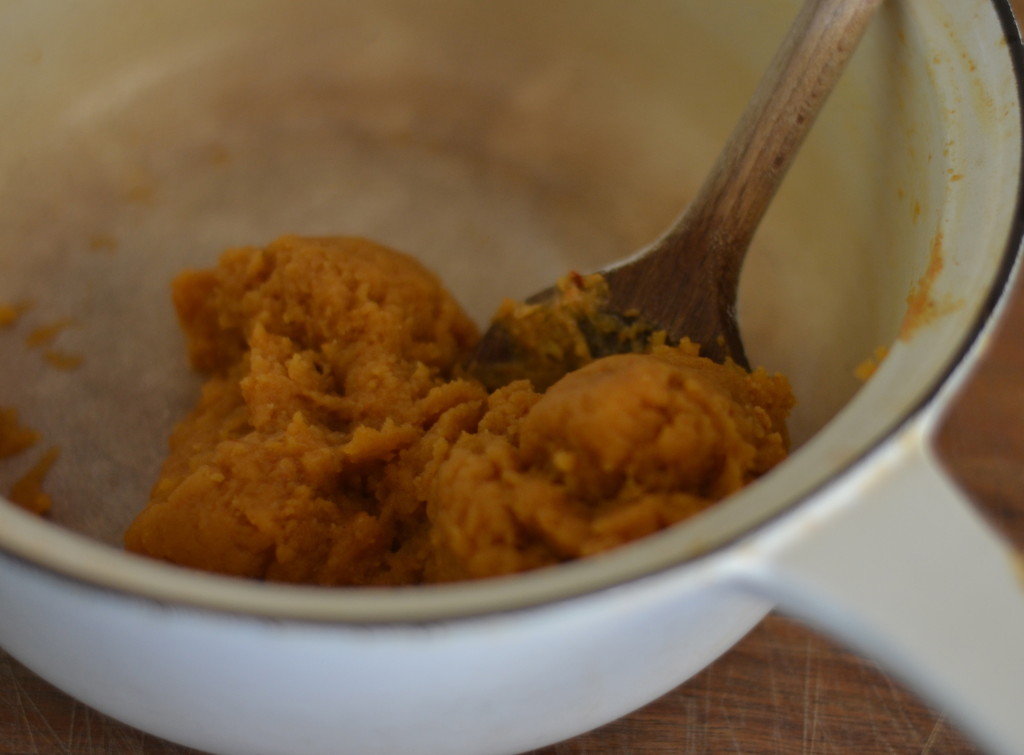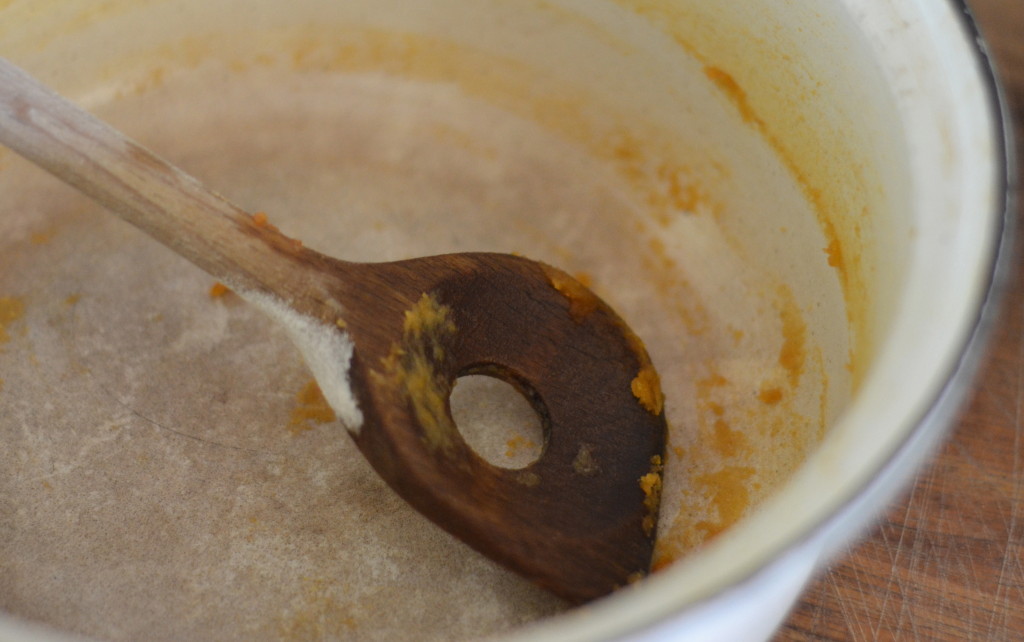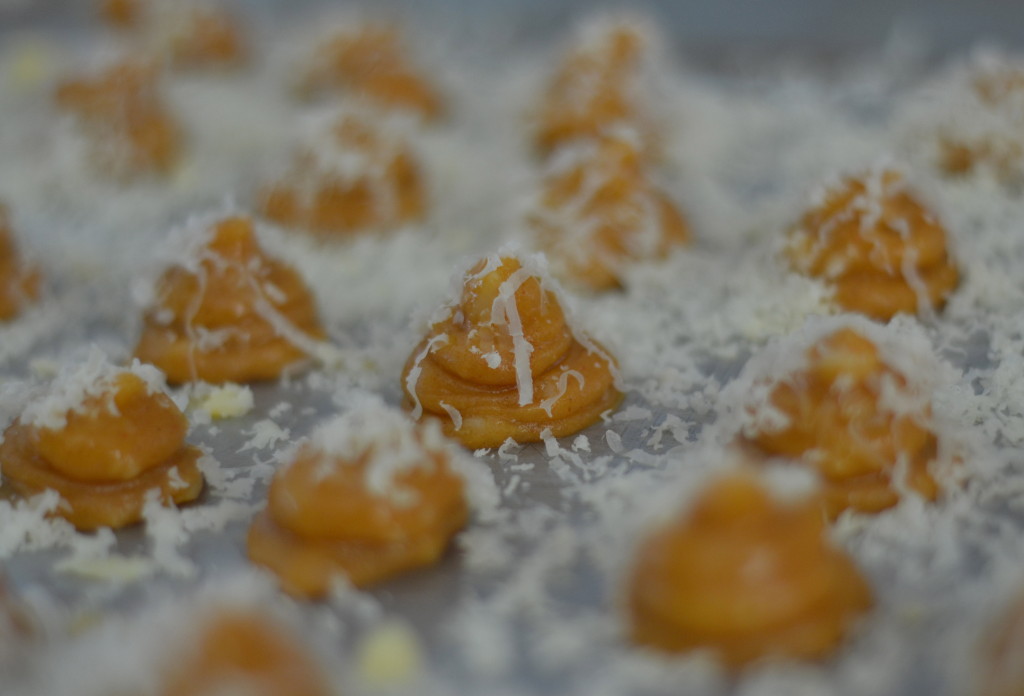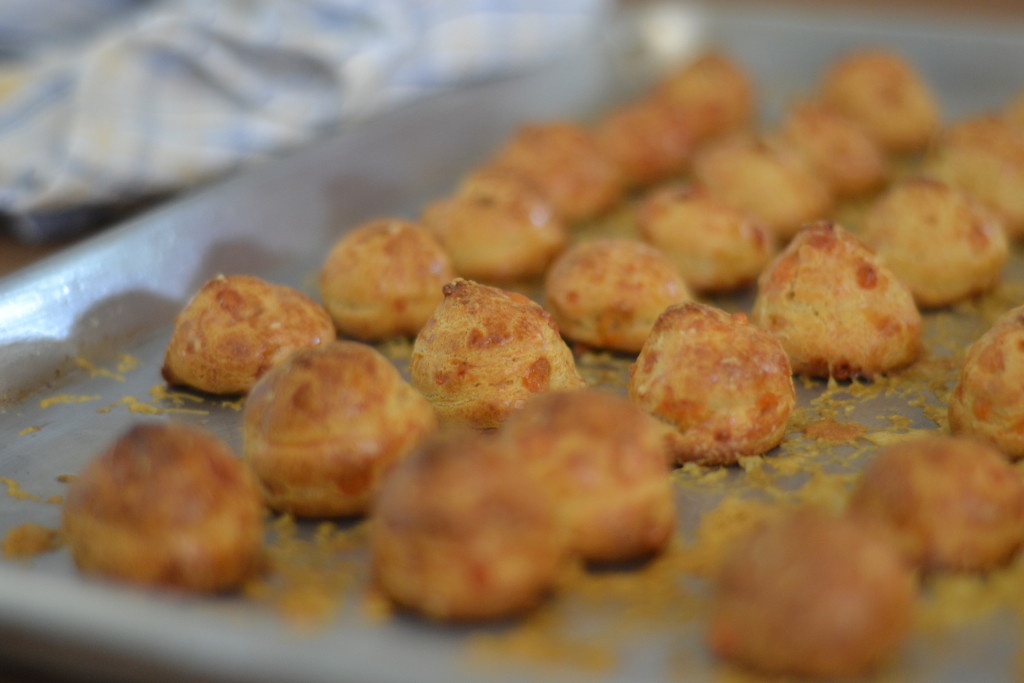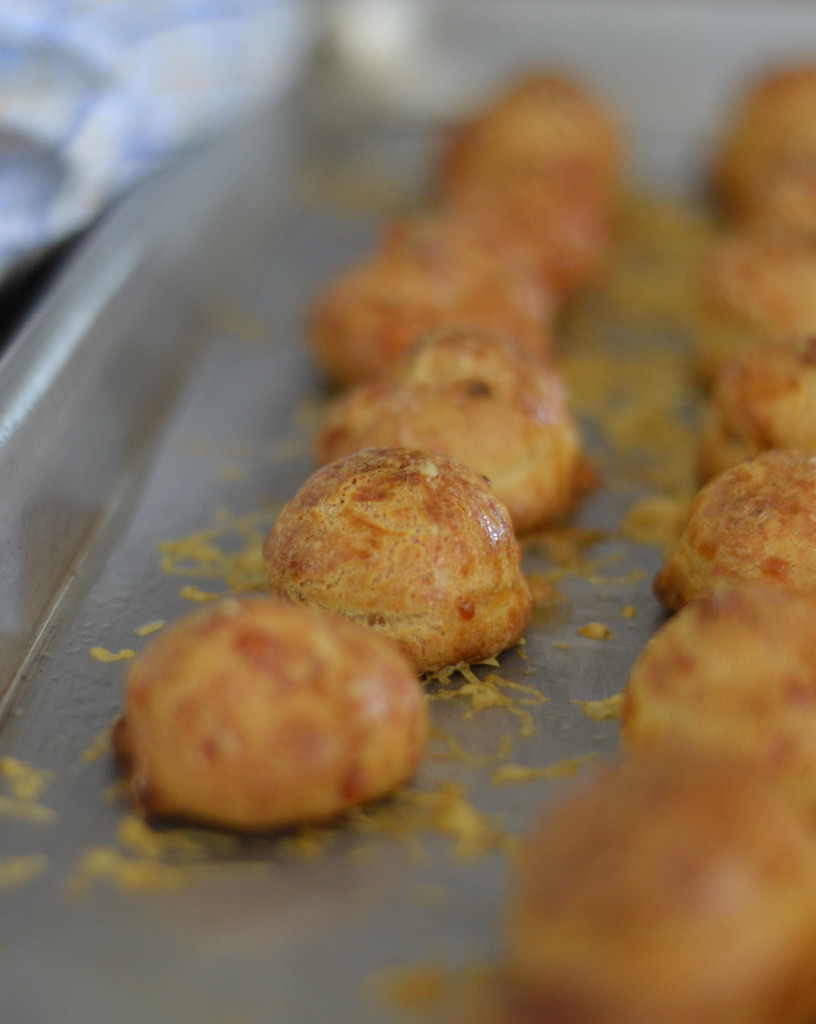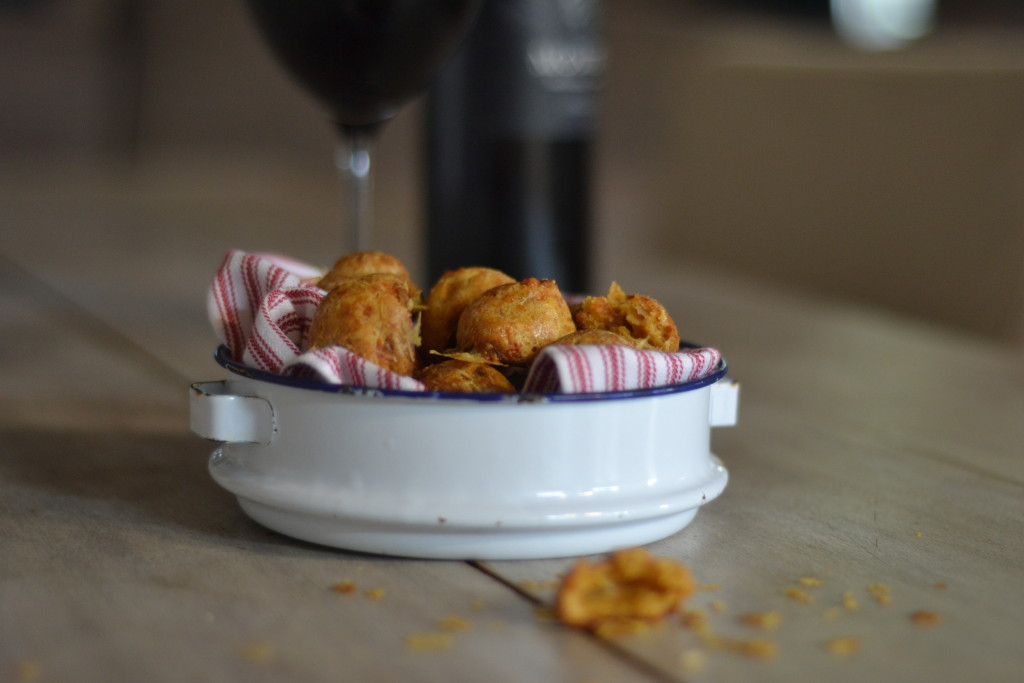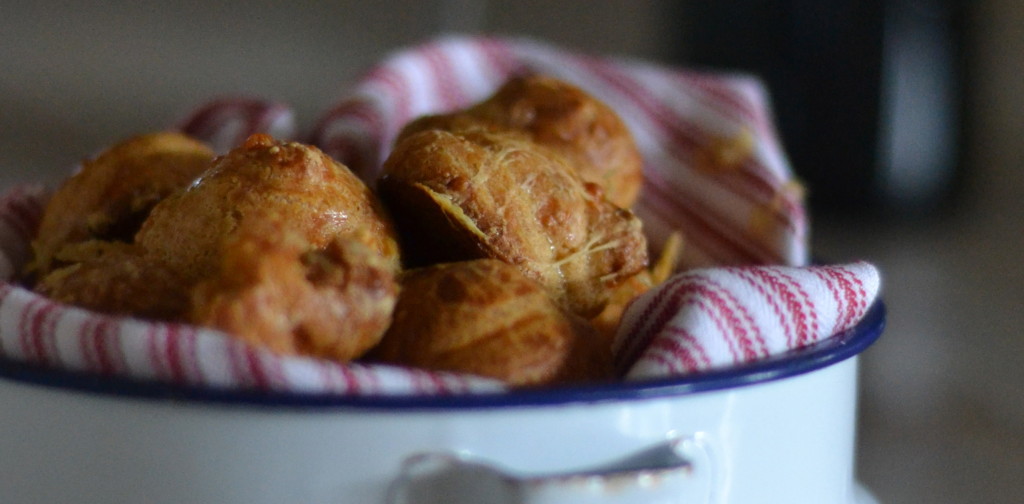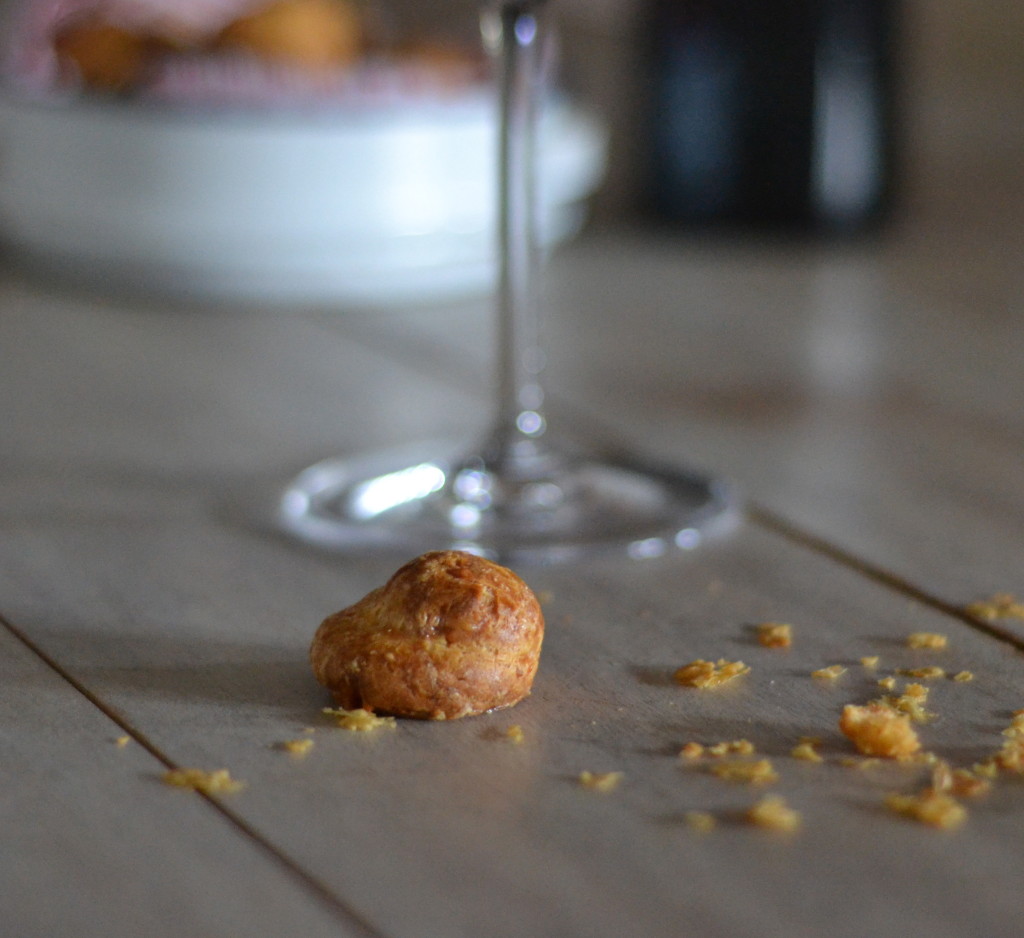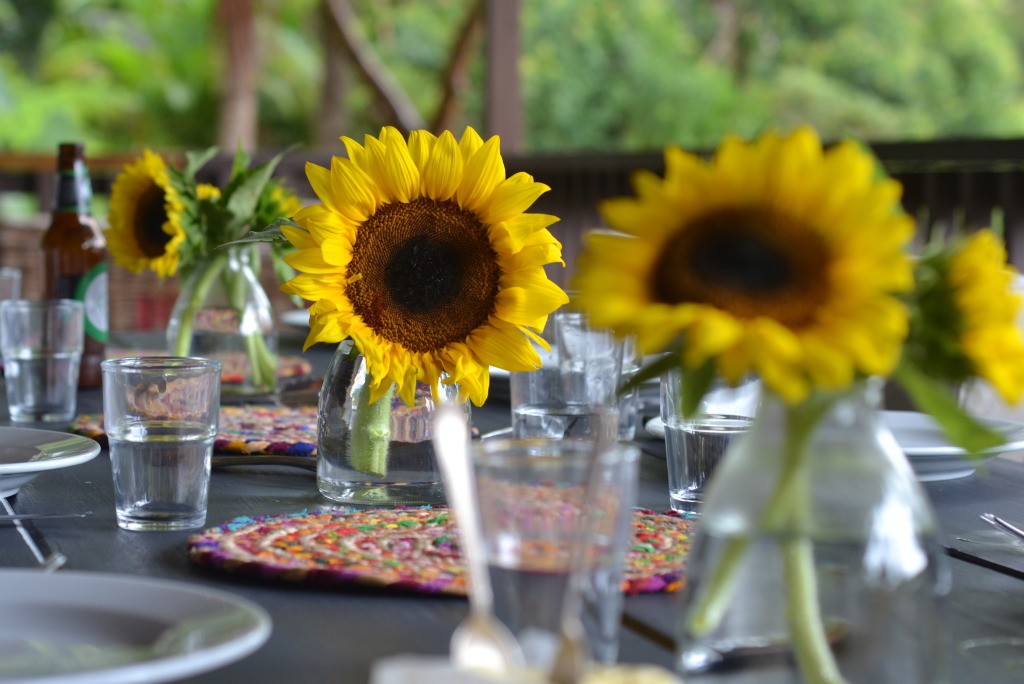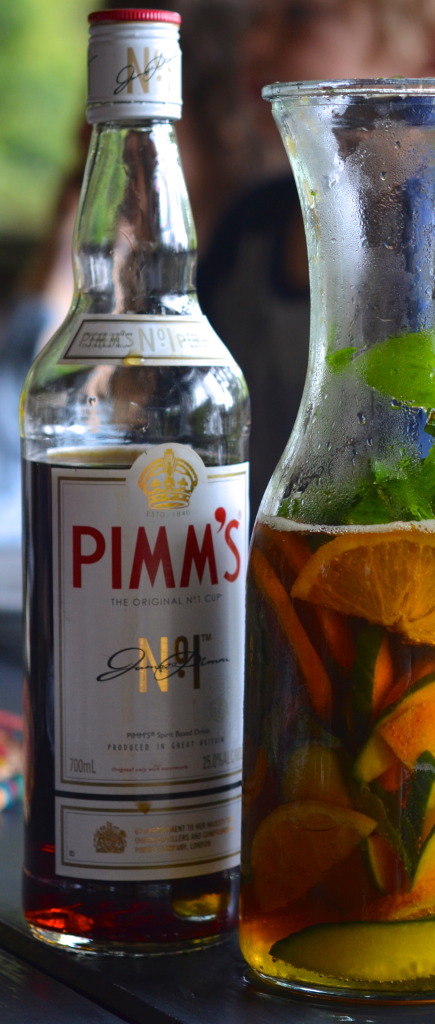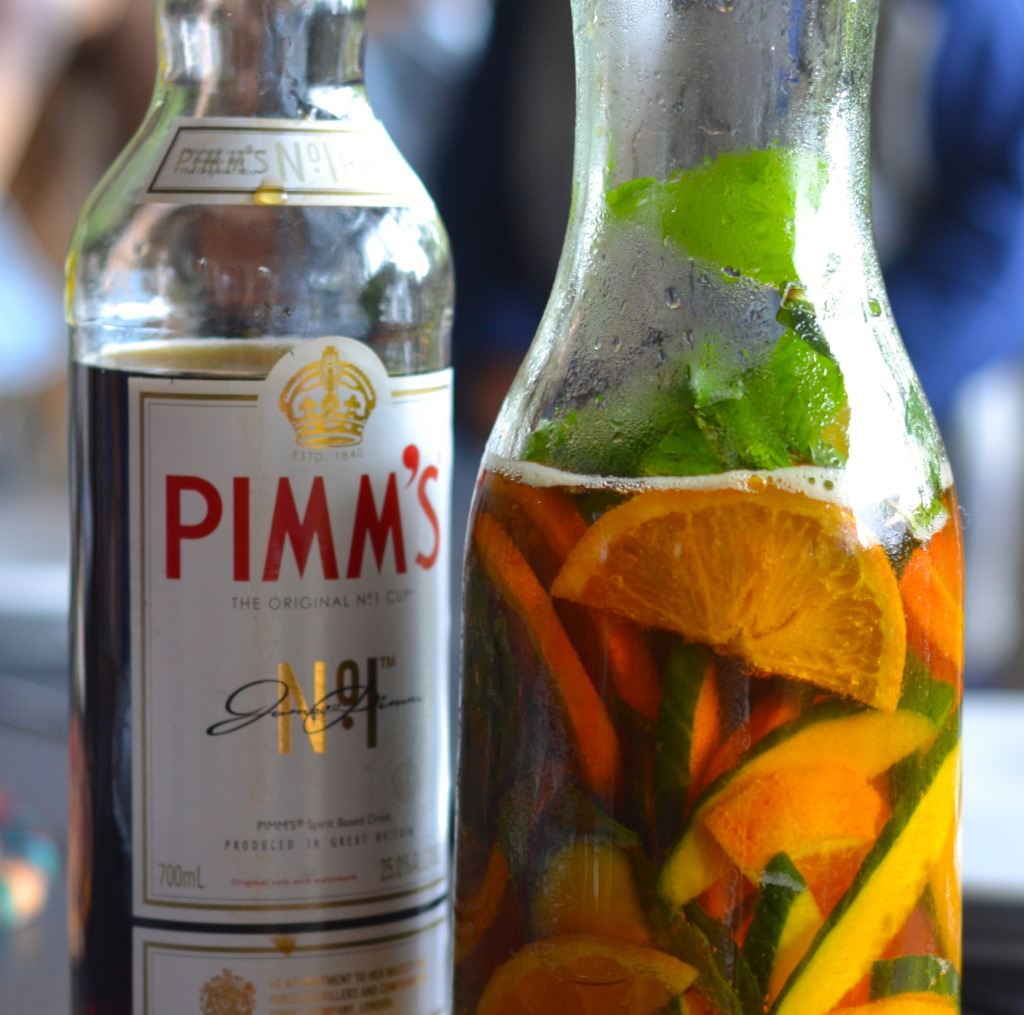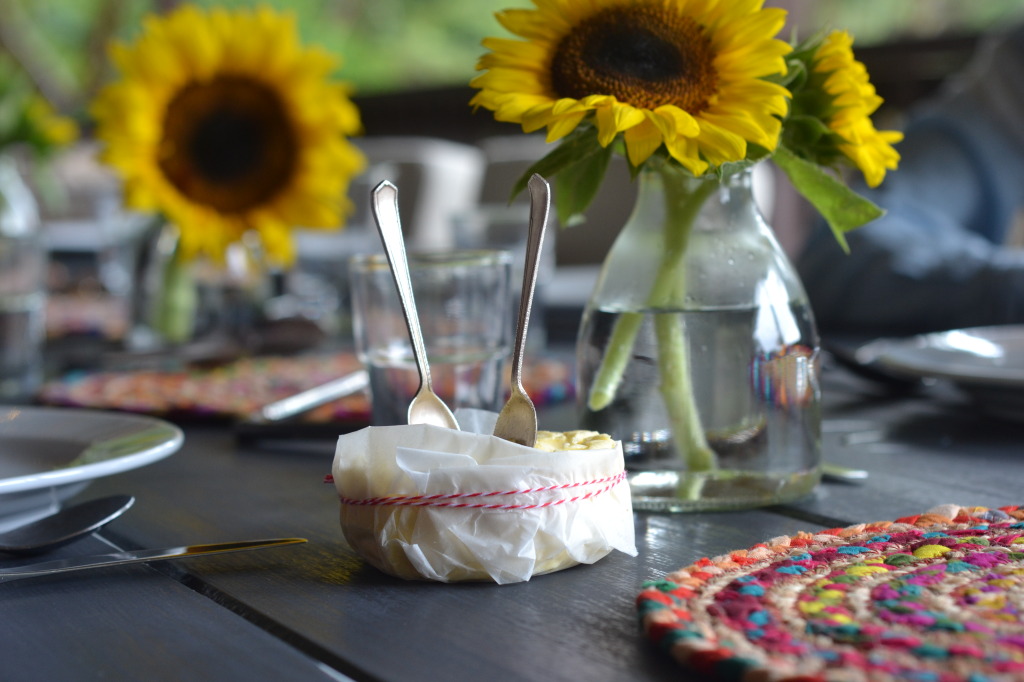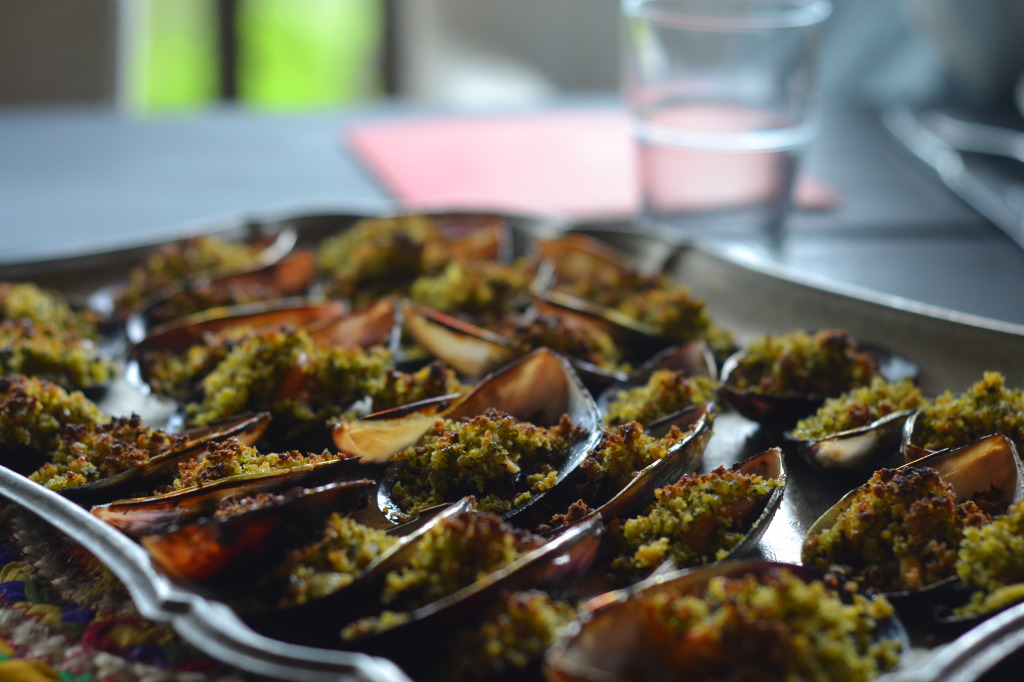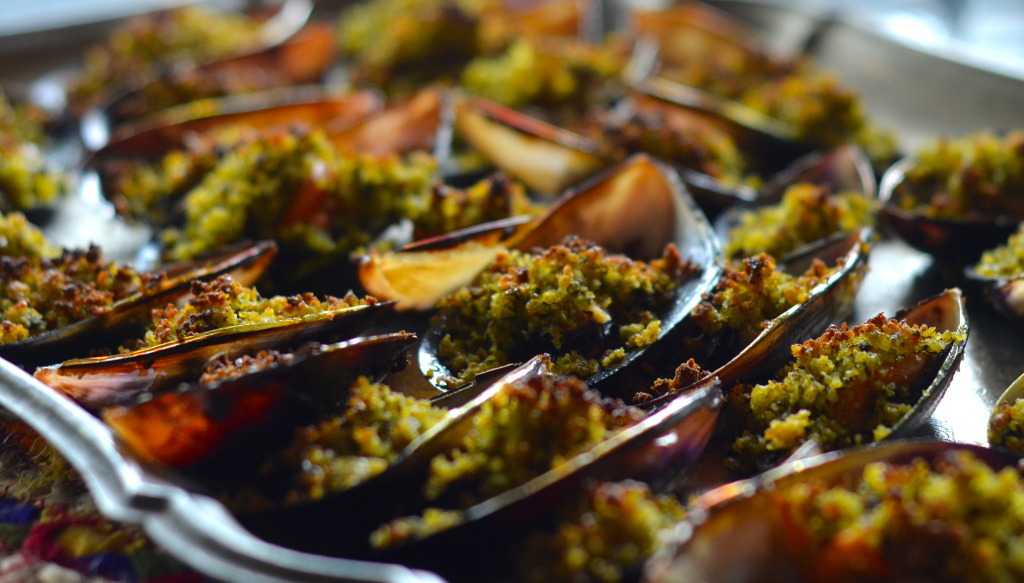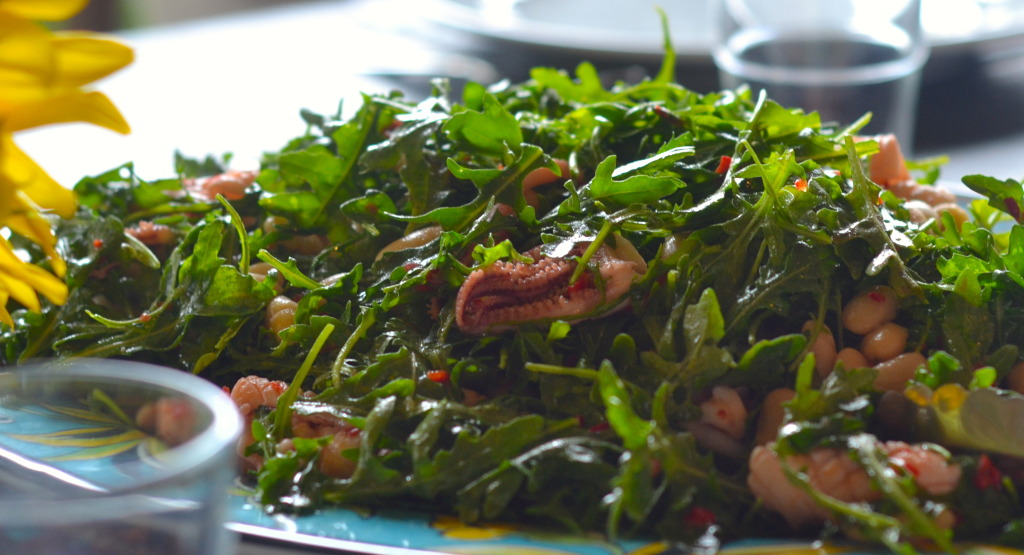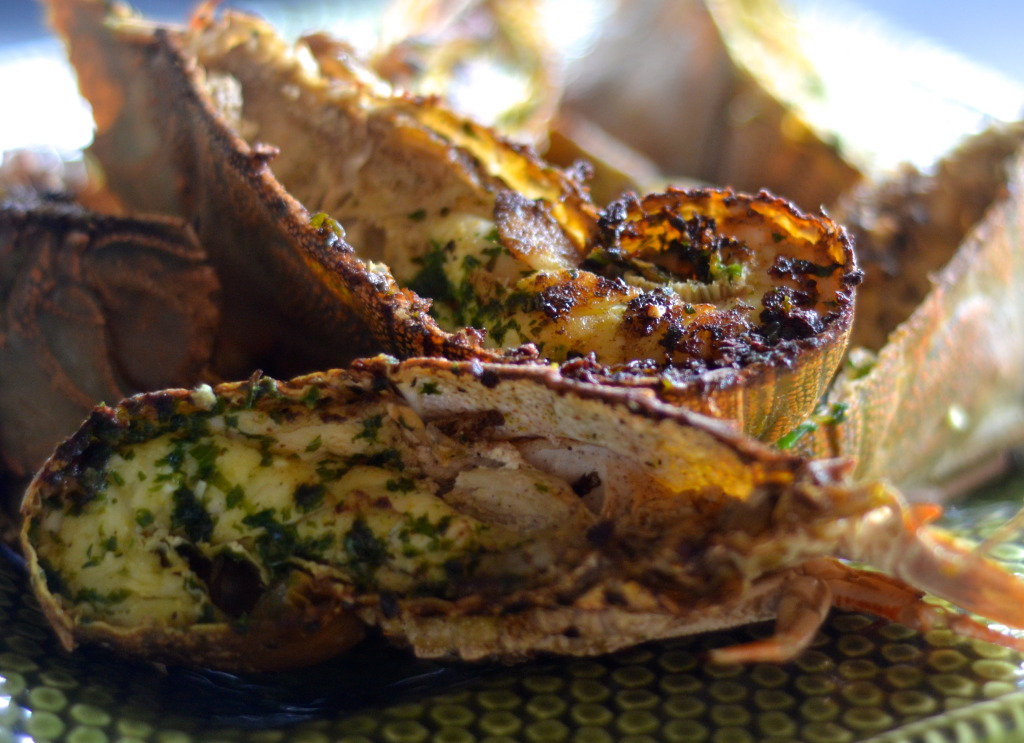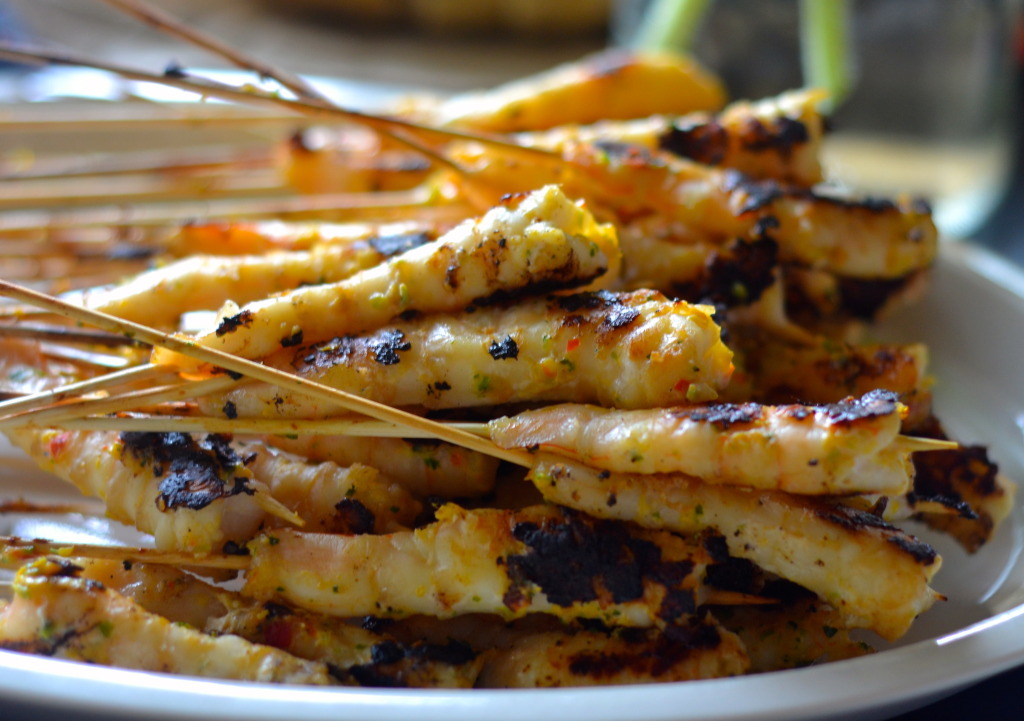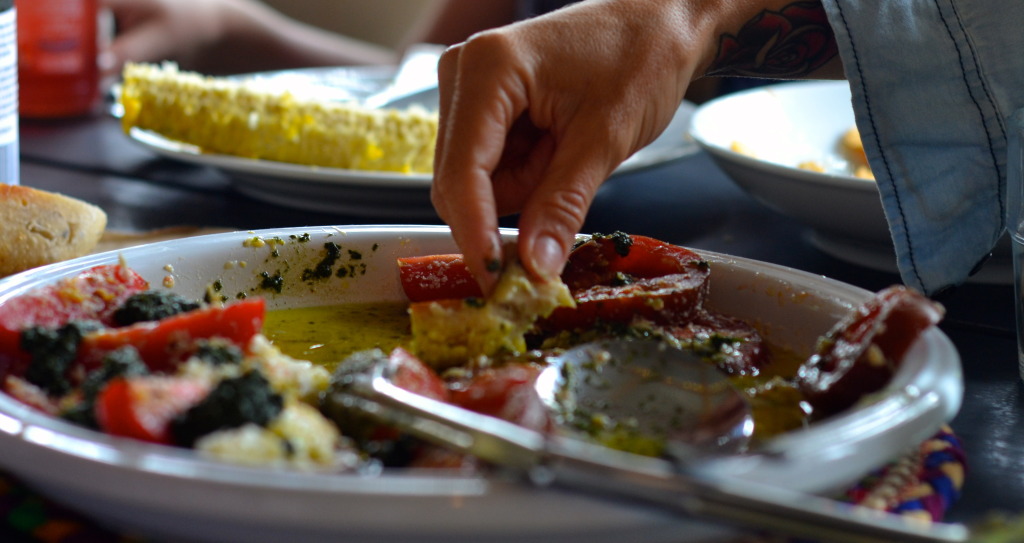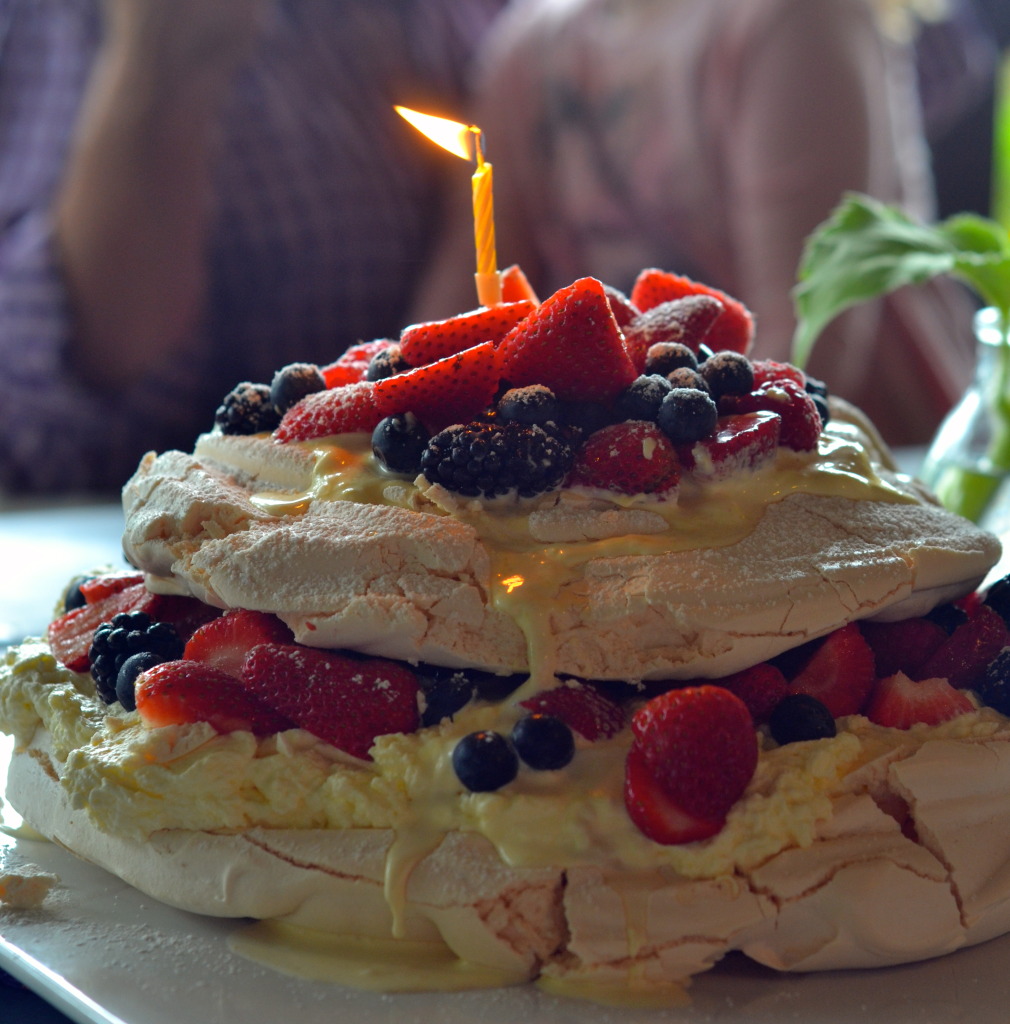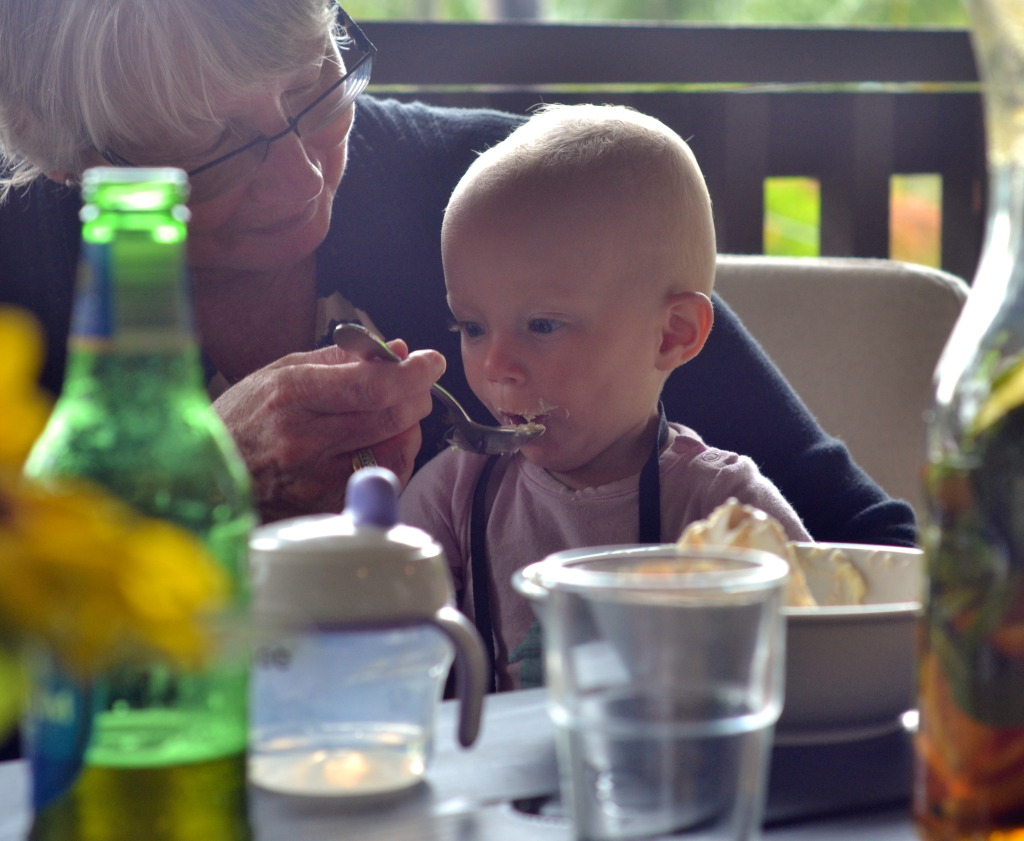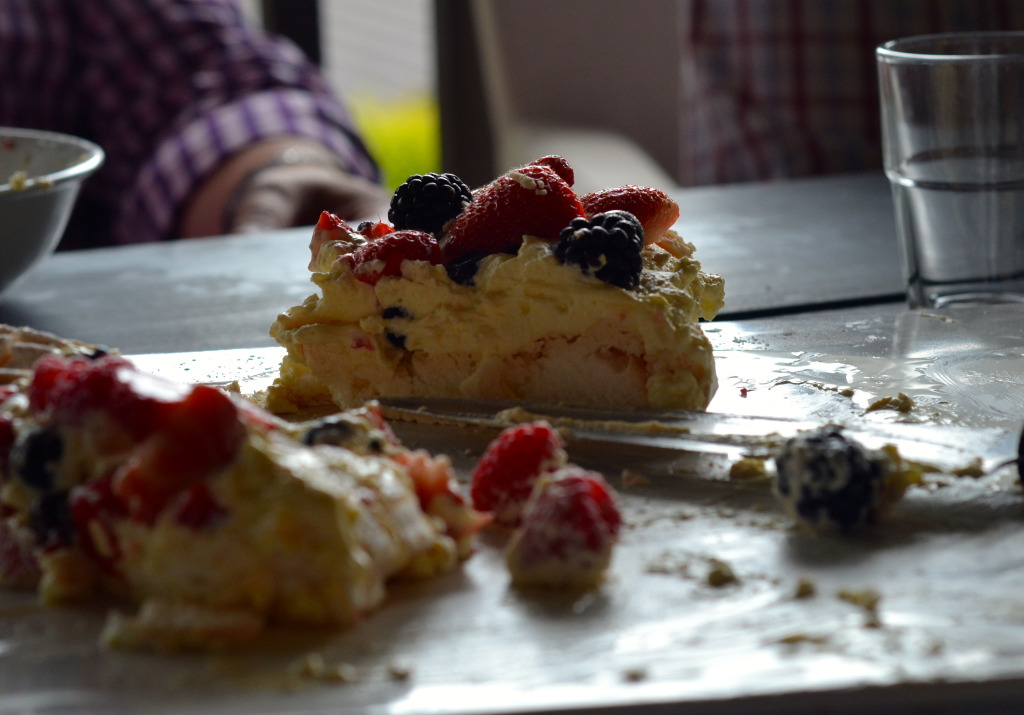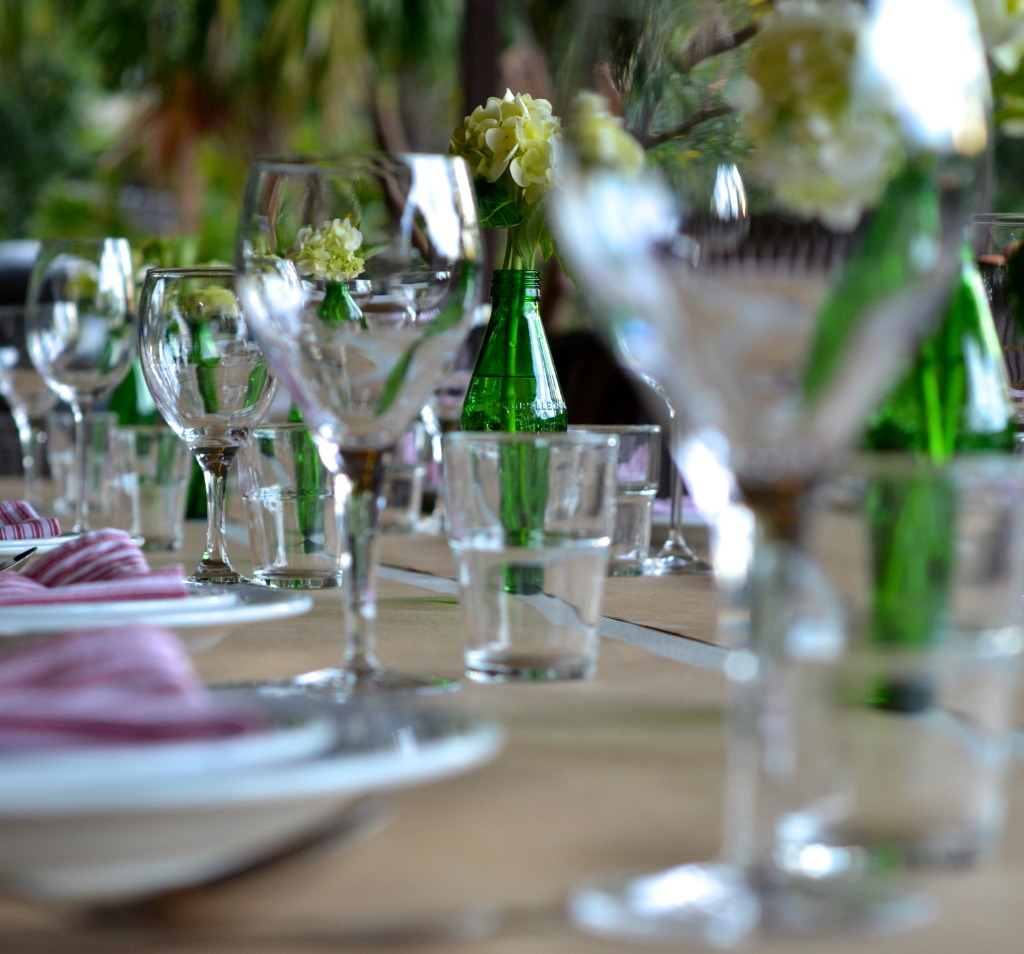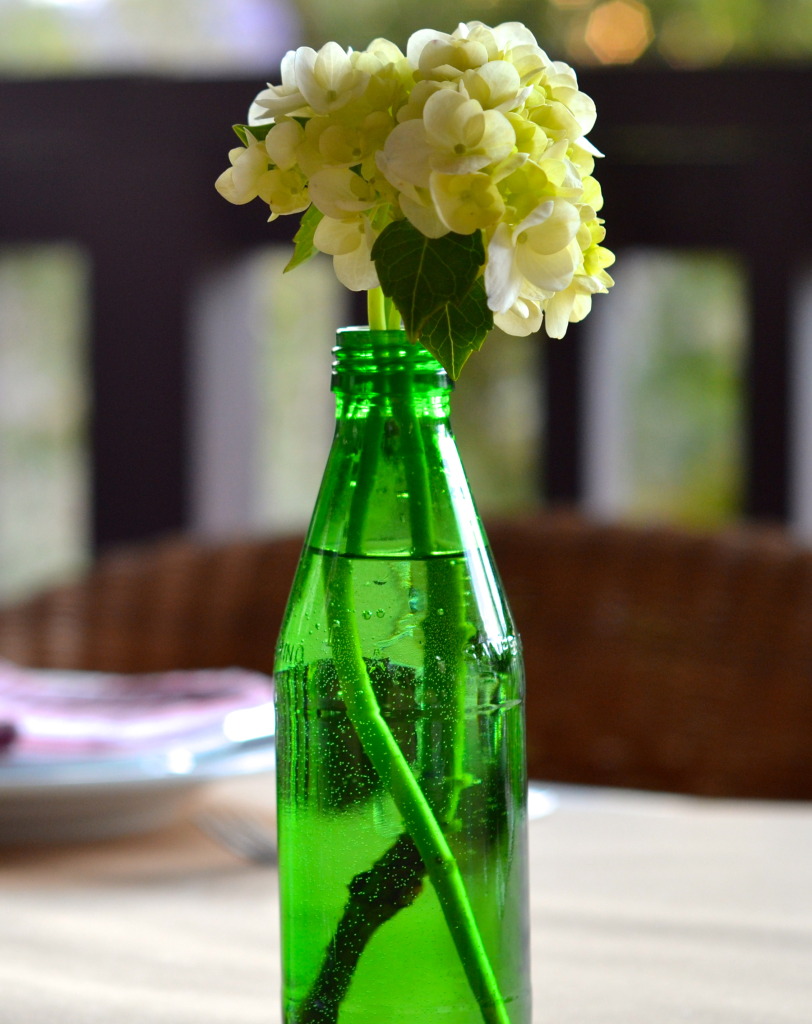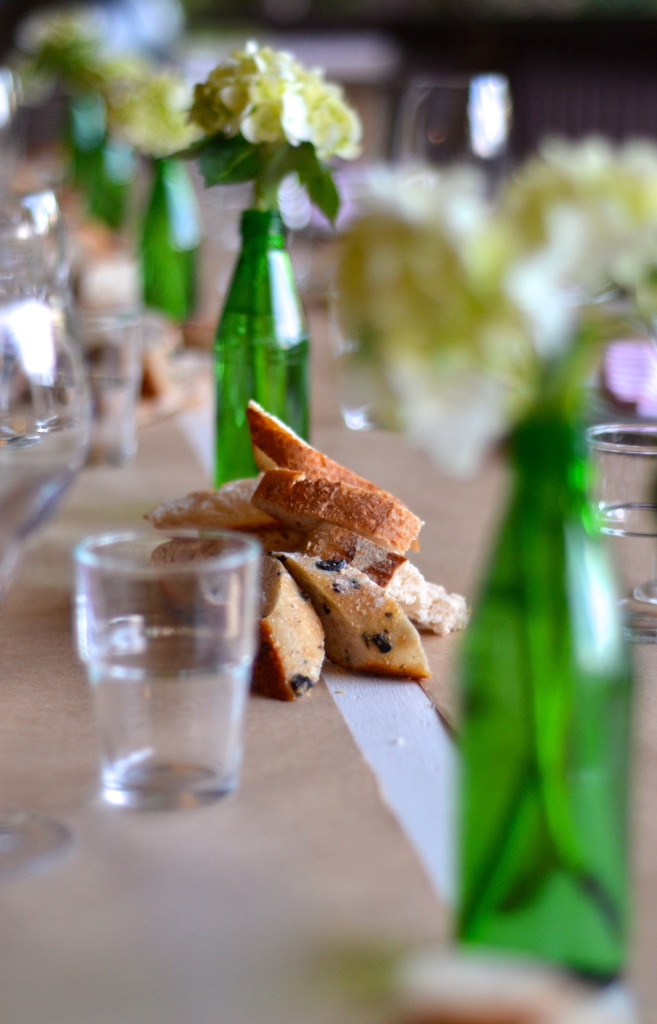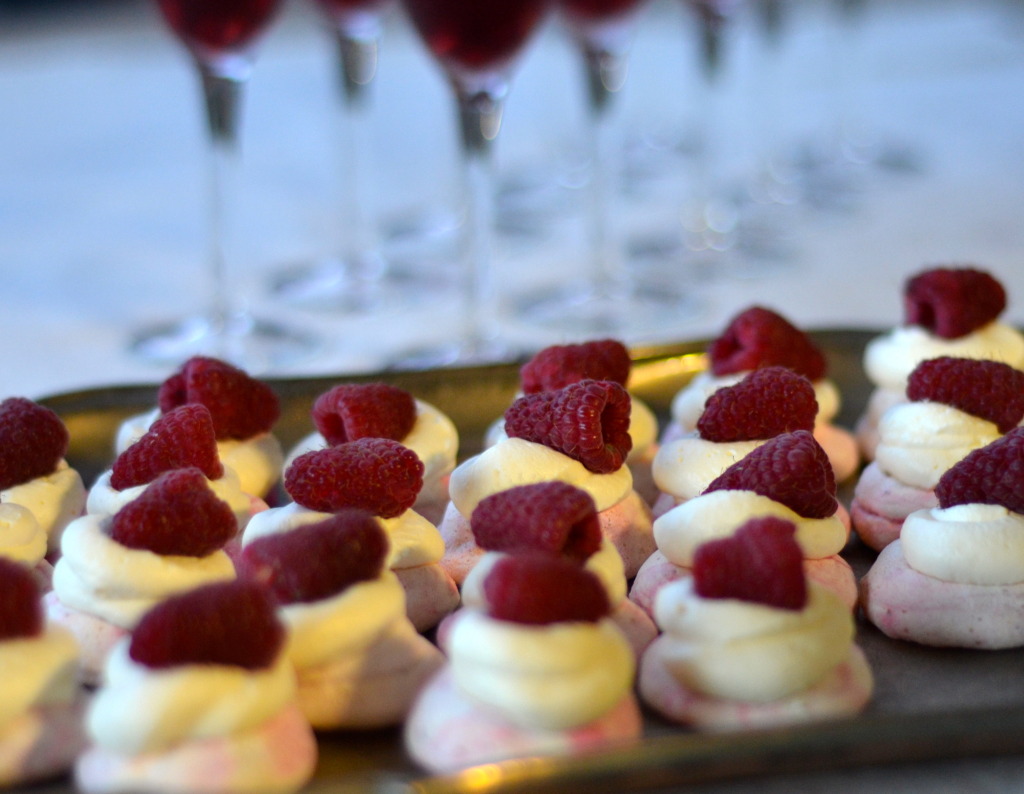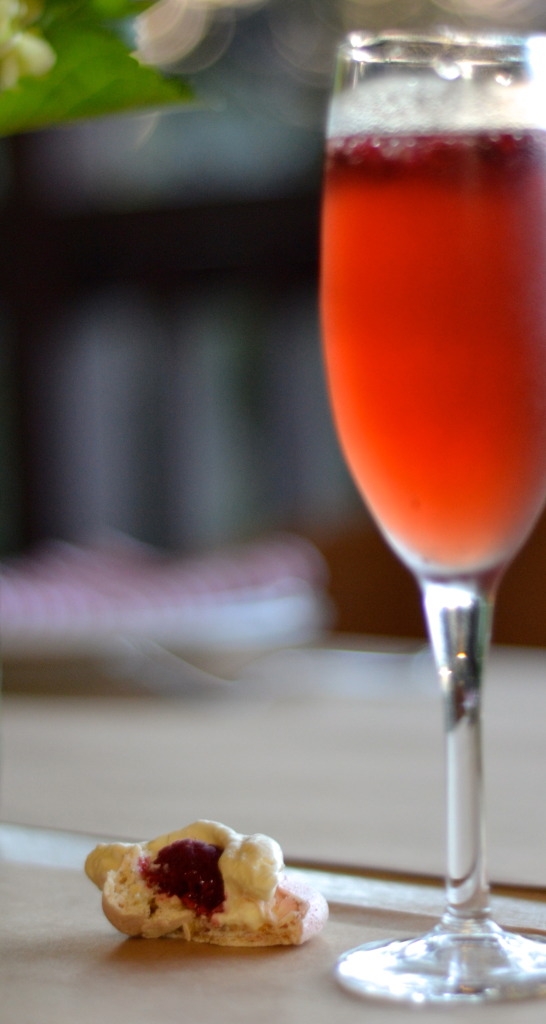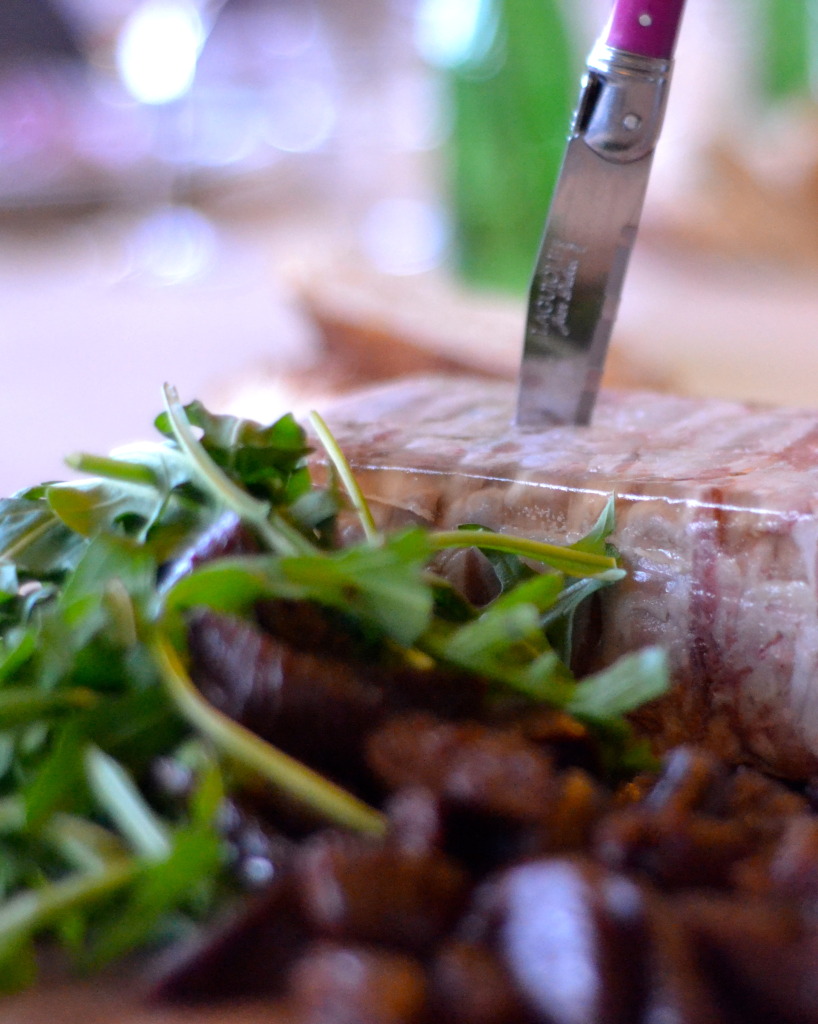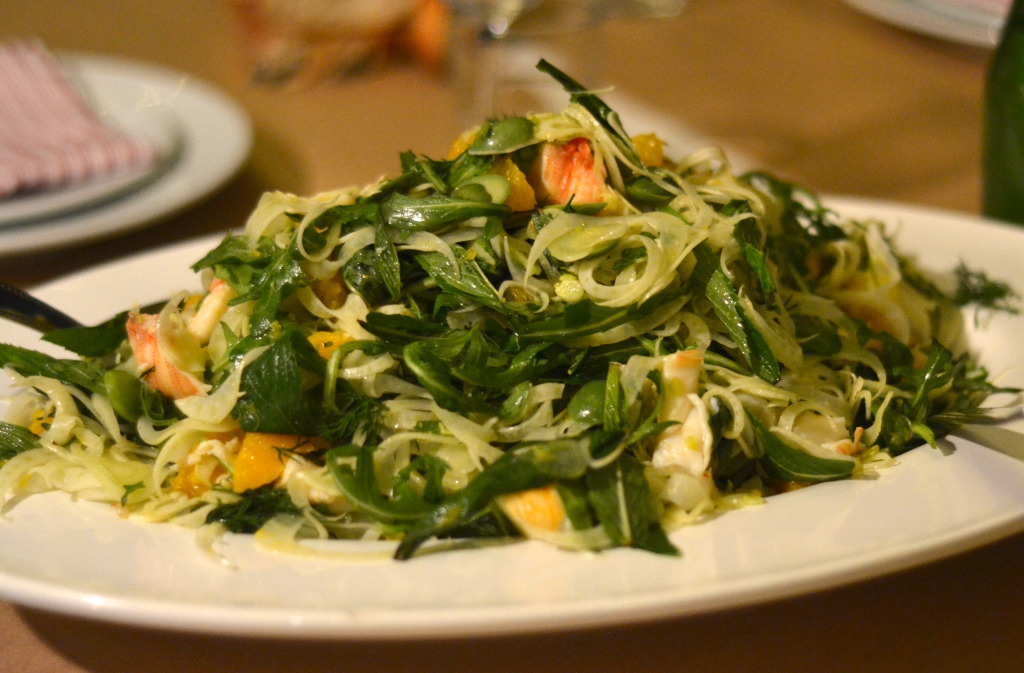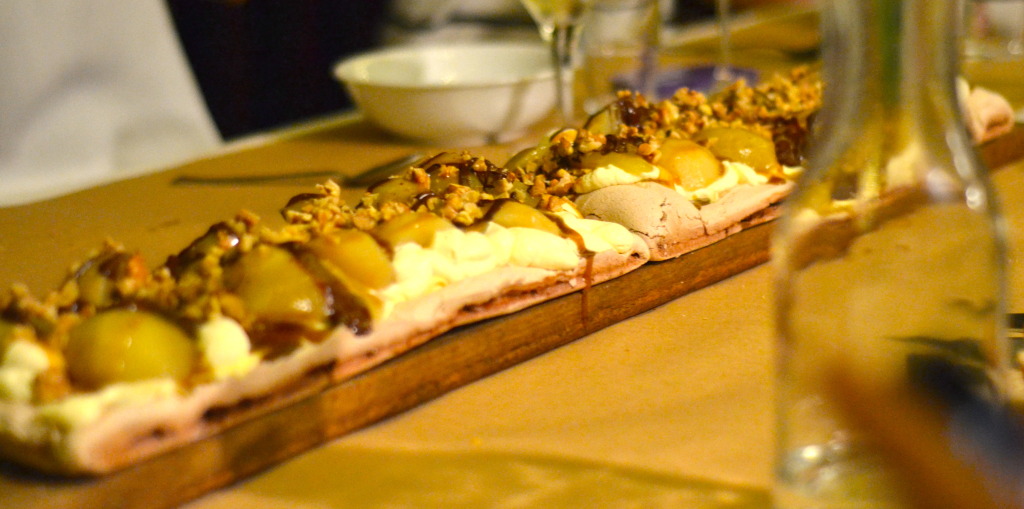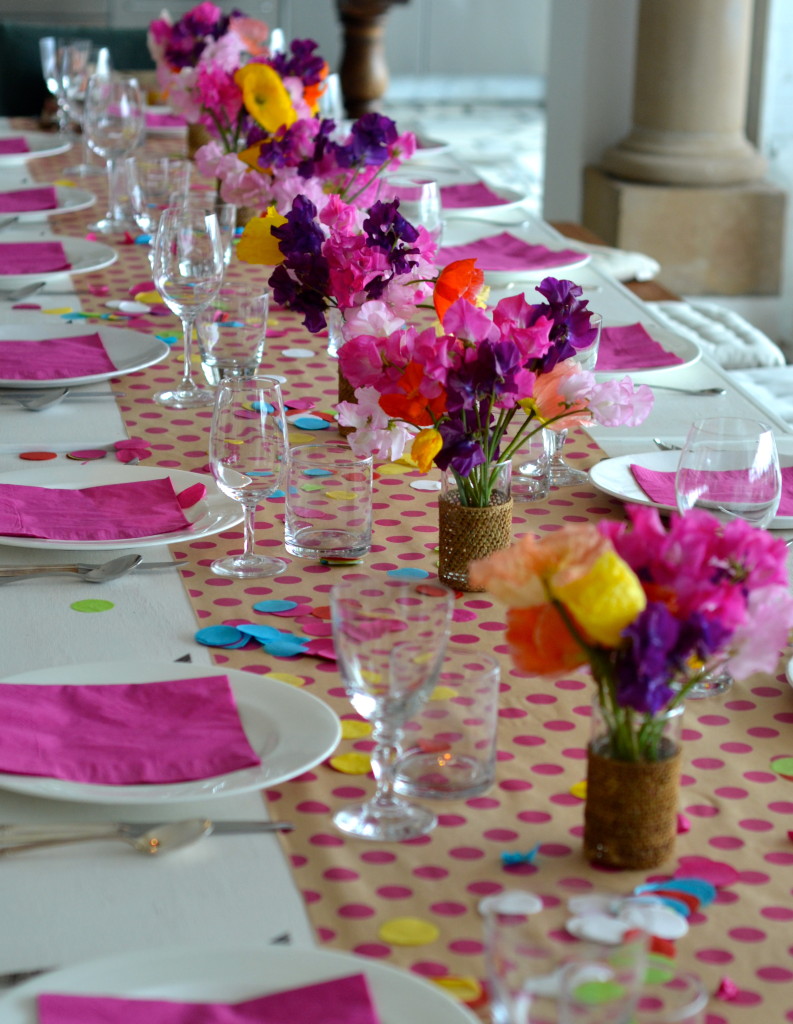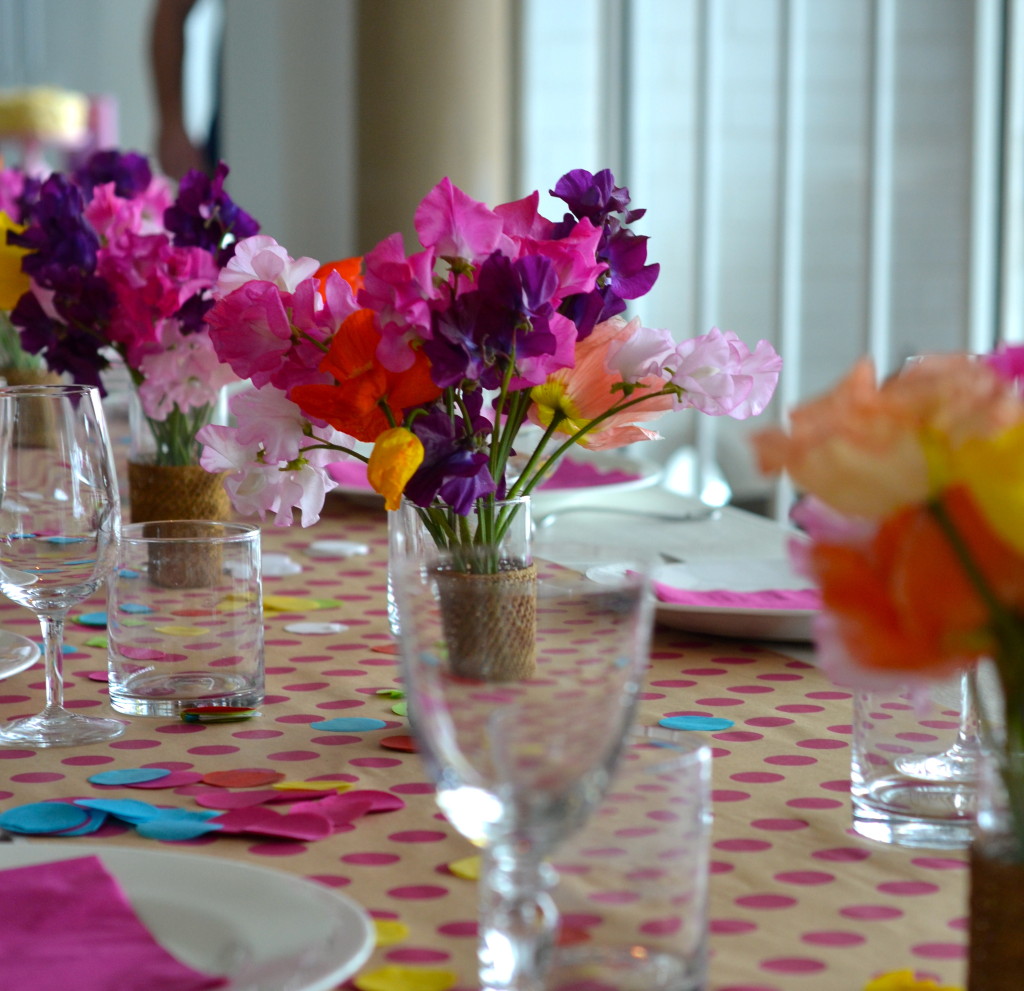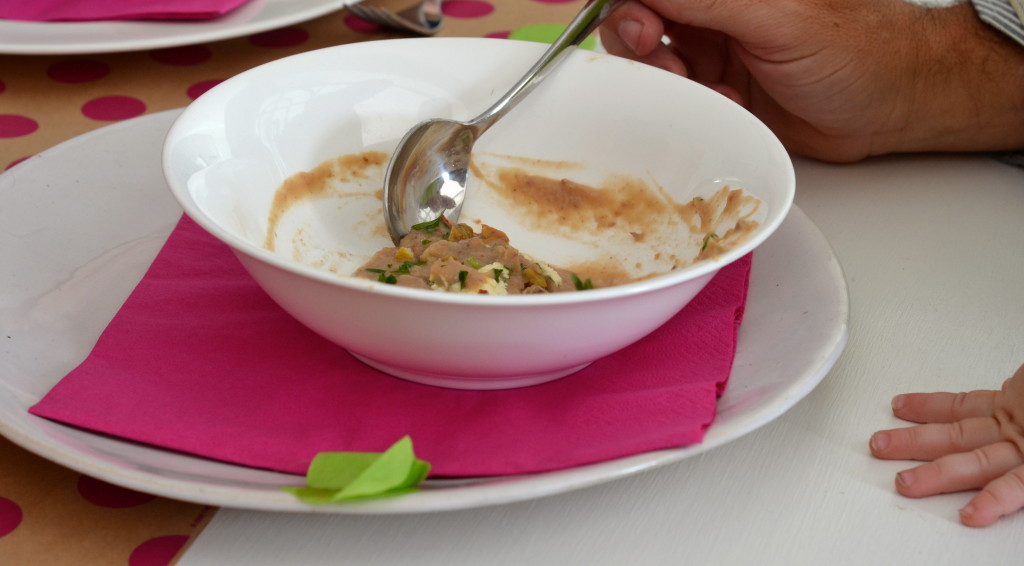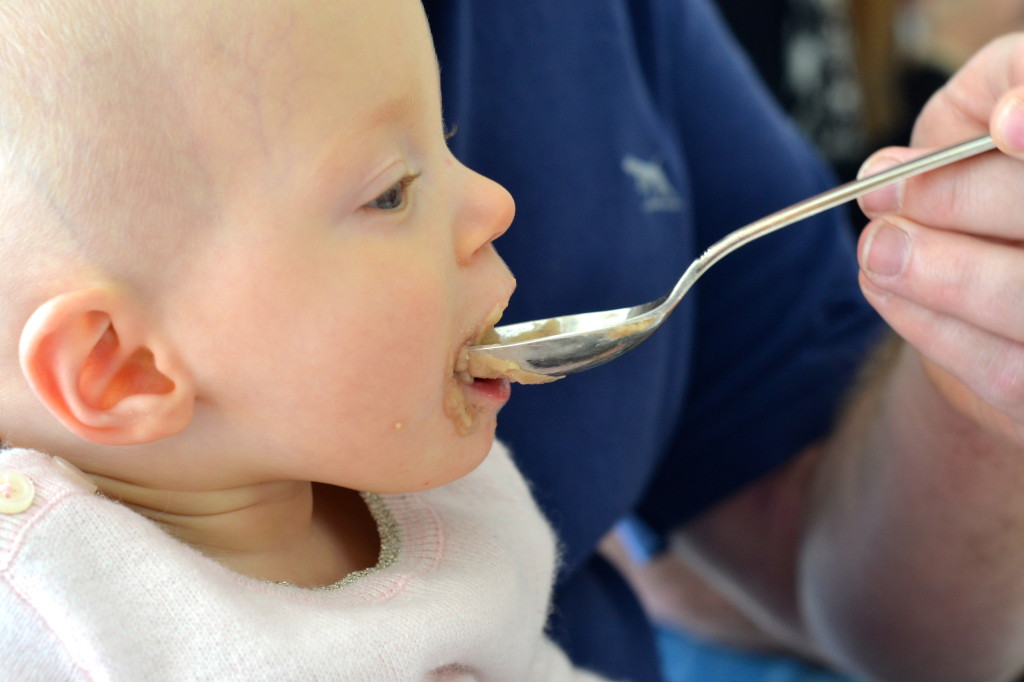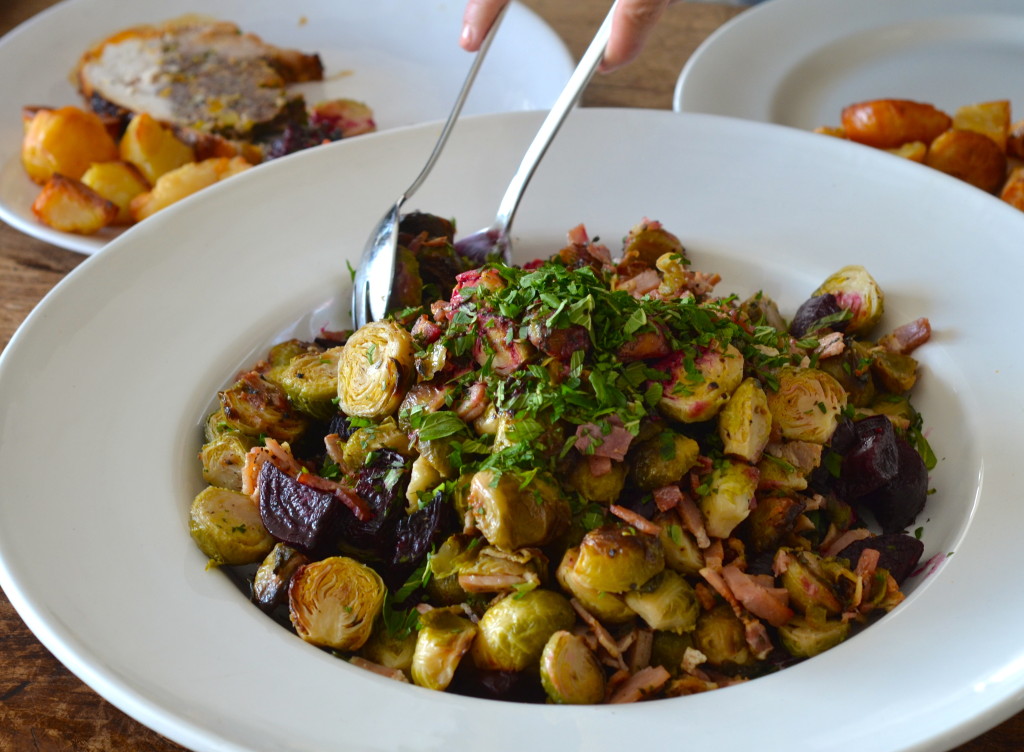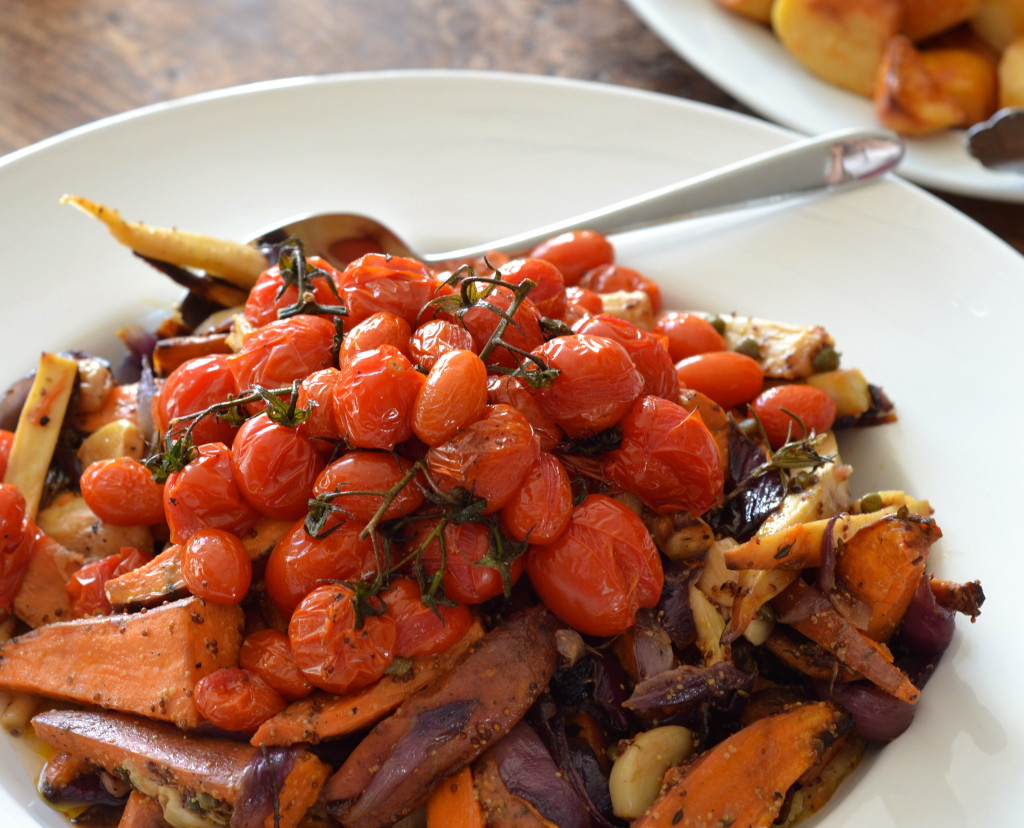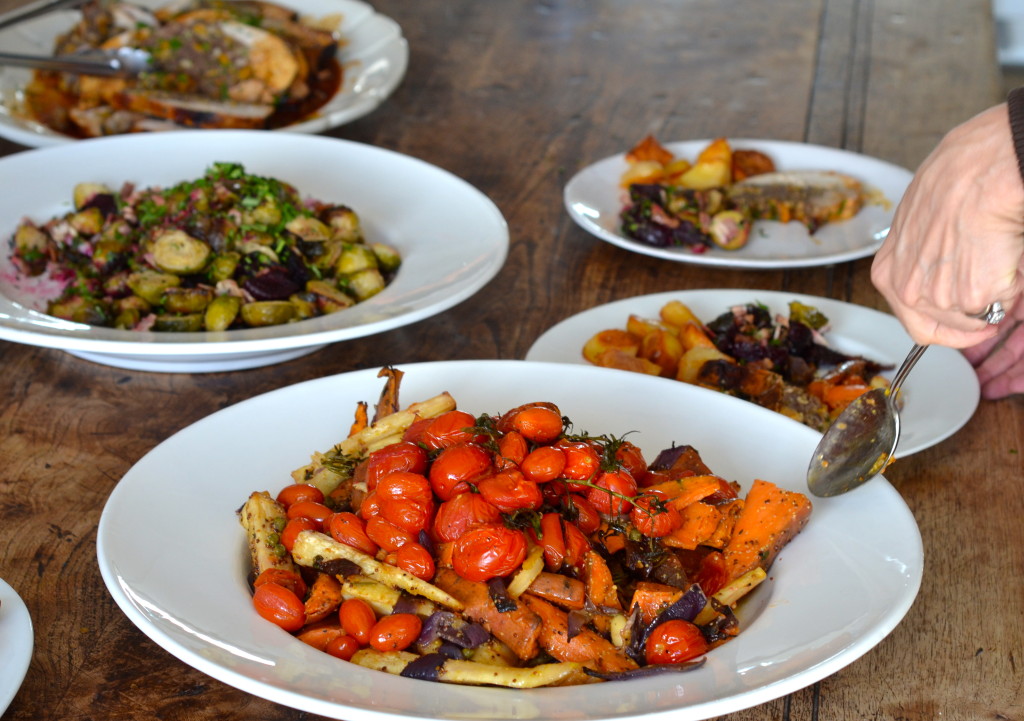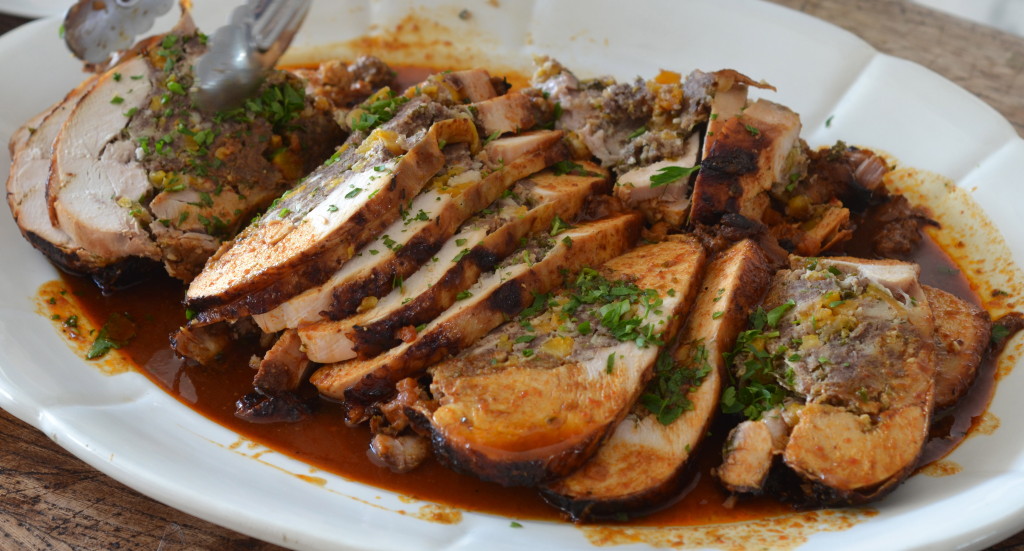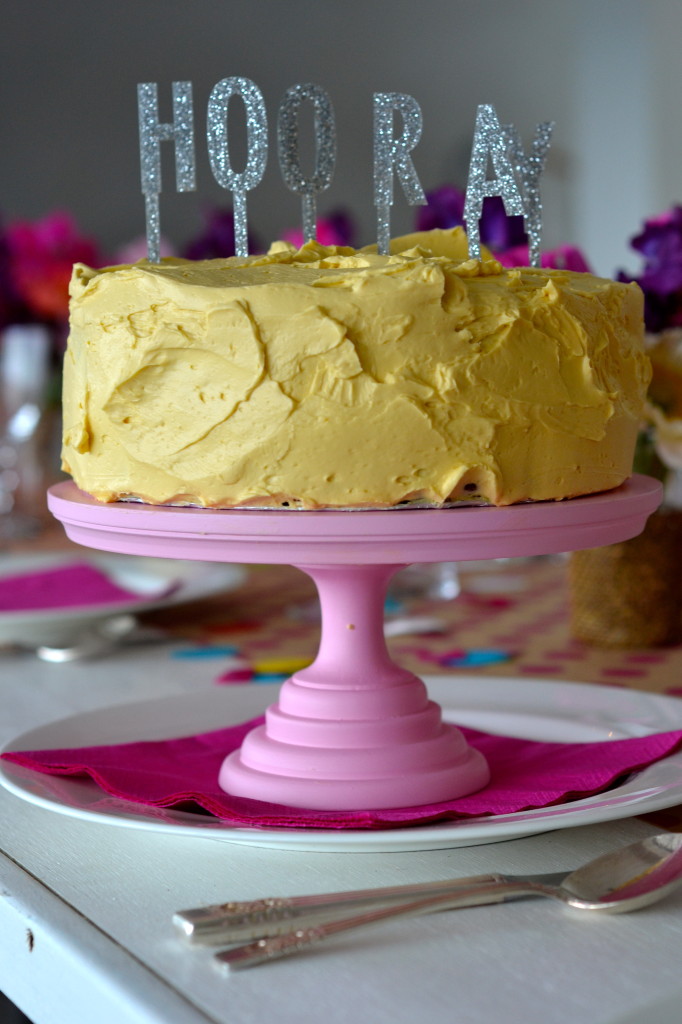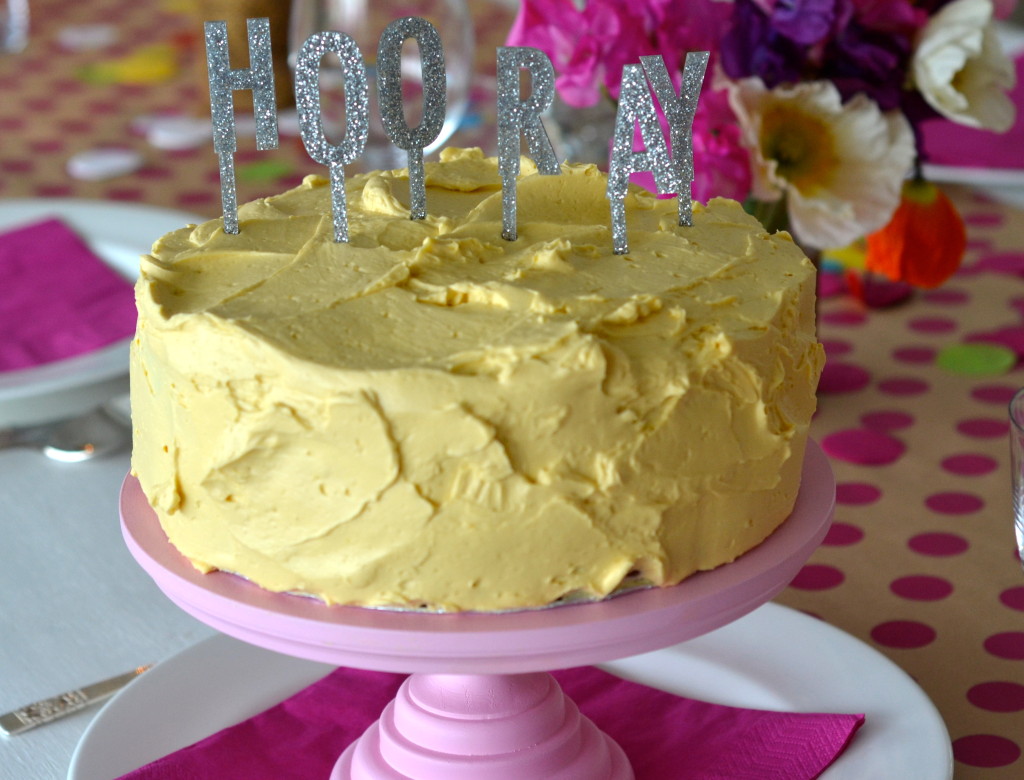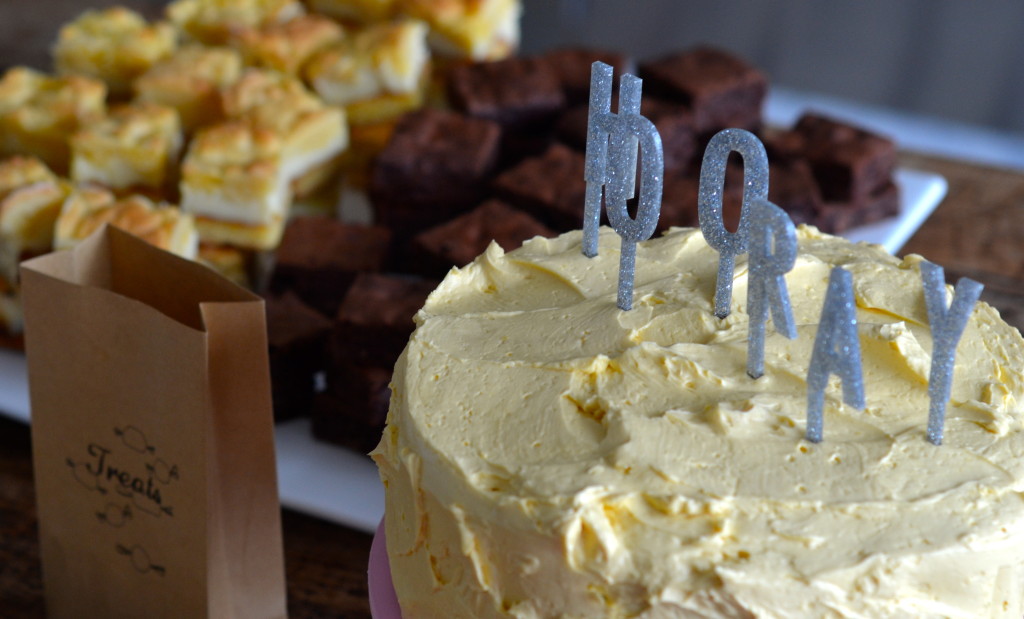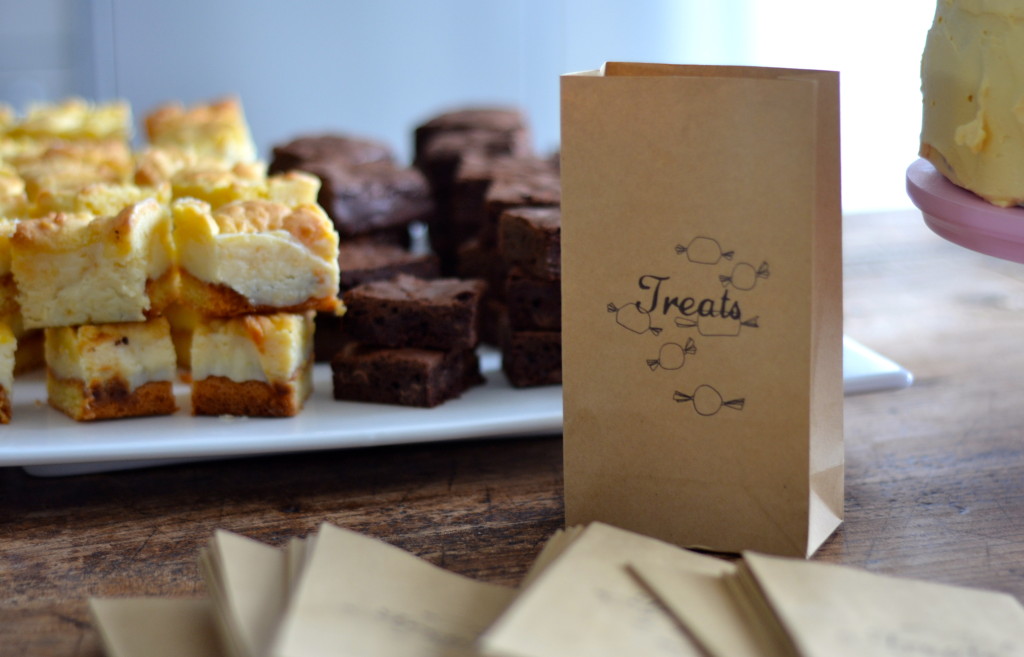‘Your eggplants are burning’ observed Mark. I’m sure the eggplants sitting directly over the gas flame on the stove could indeed look like they were scorching. I was making baba ganoush and charring the dark, purple skin of the eggplants to impart an aroma of smoke to the final dish. Baba ganoush is very straightforward to make, with a handful of ingredients and a few key steps to getting it just right. In its finished state it’s rather alluring and seductive. Sharp and zesty it pricks your palate, and with wonderful smoky undertones, it leaves you wanting more.
I was preparing the Middle Eastern side dish to accompany roast lamb. Spiked with lemon and mint, it makes such a great partner for the sweet, earthy meat, cutting through its richness. Baba ganoush also serves well as an appetizer, whizzed in a food processor with a big spoonful of natural yoghurt, so that it’s nice and smooth for scooping up with a triangle of toasted pita bread. Placed atop individual, crisp, rounds of golden, puff pastry with some mild goats cheese, a few wedges of cherry tomato and some rocket, it creates a stunning little entrée. And of course, it plays a wonderful role as part of a meze platter, perhaps sprinkled with a few pomegranate seeds for a bit of glamour.
Smoky and zesty could quite possibly be one of my favourite flavour combinations. Think thinly sliced pieces of smoked salmon and a single Iceberg lettuce leaf, (I think Iceberg for the undenied crispness of it), placed on a slice of hot buttered toast, then doused in lemon juice and black pepper. Rounds of chorizo fried in a pan and eaten smothered in lemony, garlic mayonnaise. Paella, full of chicken, pork and seafood, with a wonderful, almost burnt, base layer, and a wedge of lemon to marry all the flavours together. Steak cooked over a char grill, until the exterior is blackened and caramelised, served with pomme frites and lemon dressed salad leaves. You get the picture I’m sure.
There’s something very reassuring and authentic about cooking over a flame, harking back to culinary institutions of times gone by, before induction stoves and Thermomixes. (Sorry. As good as I’m sure they are, I’m not in the Thermomix camp.) And I like to keep in touch with tradition. So even though you can jazz this recipe up with herbs and seeds and pastry and pita, at its core, it’s insanely simple. Traditional. Time honoured. And with good reason.
Baba ganoush
The one thing that makes this dish really sing is cooking the eggplants over an open flame. Be brave. Embrace your inner pyromaniac and try this method. Simply put a cake cooling rack (an old one as it will discolour) over a gas flame on your stove (or you could use a camping stove) and place one or two eggplants on top of it. Yes the eggplant will burn sitting directly above the burner, but only the outer skin, and as you keep turning the fruit until every side is black, the flesh inside will become soft and take on a smoky aroma.
When the eggplants are nicely charred all over, place them in a bowl to cool. When they have dropped in temperature sufficiently enough to be handled, peel away the skin, place the flesh in a colander sitting in a bowl and let the juices run out. Drain for at least one hour.
To the drained flesh, add finely chopped garlic, lemon zest and juice, salt and pepper and olive oil. At this point the baba ganoush will benefit from being left to sit for an hour or two, even overnight, to allow the flavours to mingle.
To garnish, just before serving, stir through some finely shredded mint and parsley and sprinkle a few pomegranate seeds on top.
To recap, for 2 eggplants you will need the following.
- 2 cloves garlic, either grated with a microplane or very finely chopped
- the zest of 1 lemon plus 2 tbsp lemon juice, or more to your particular taste
- 6-8 tbsp olive oil
- generous pinch sea salt and grinding of black pepper
- optional small handful of each parsley and mint leaves, finely sliced and a few pomegranate seeds
Did I mention that baba ganoush is great with Roast Lamb?

